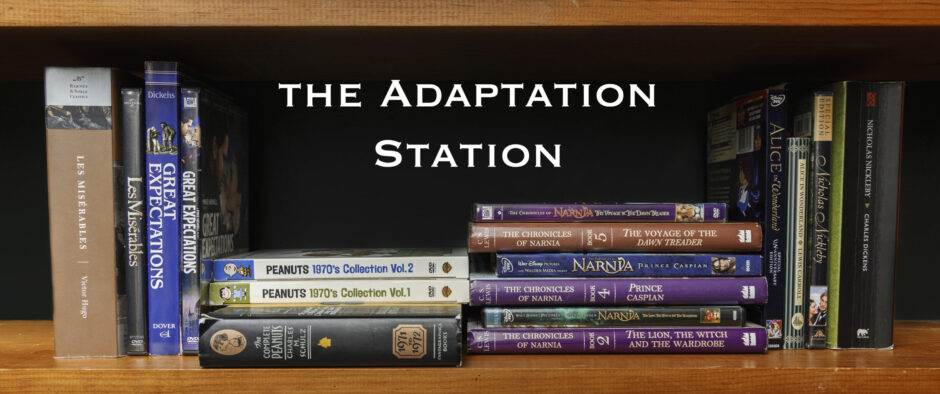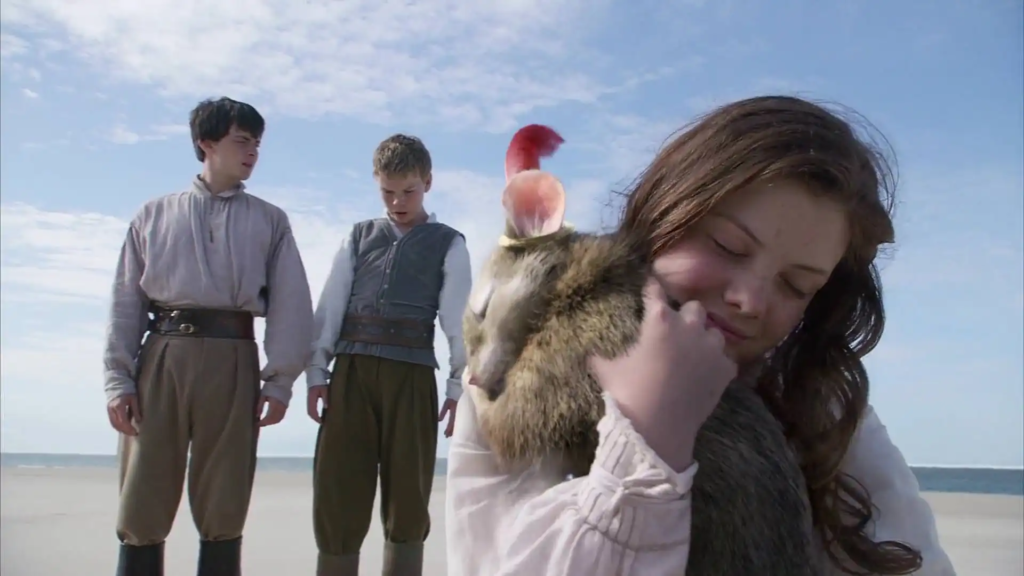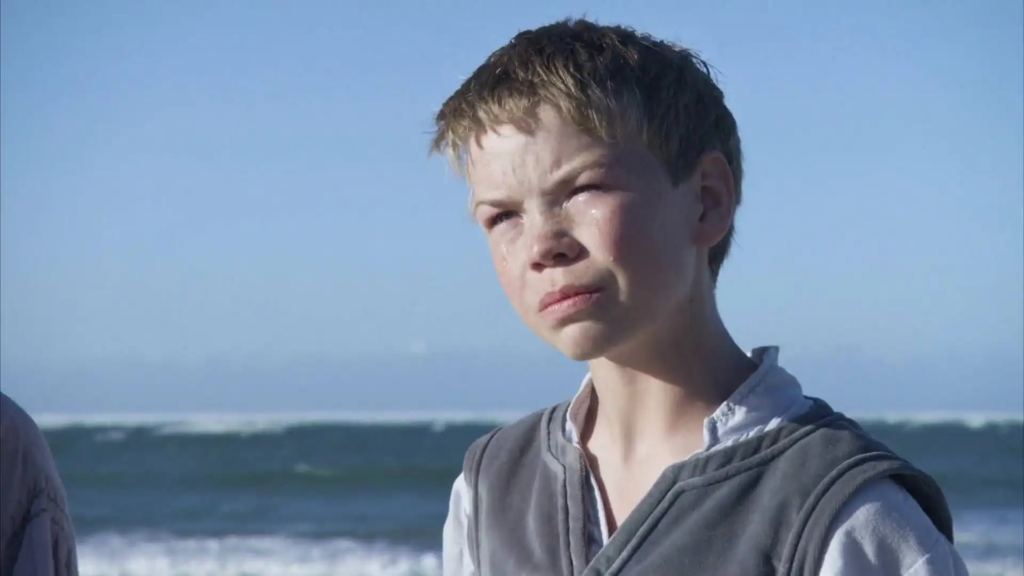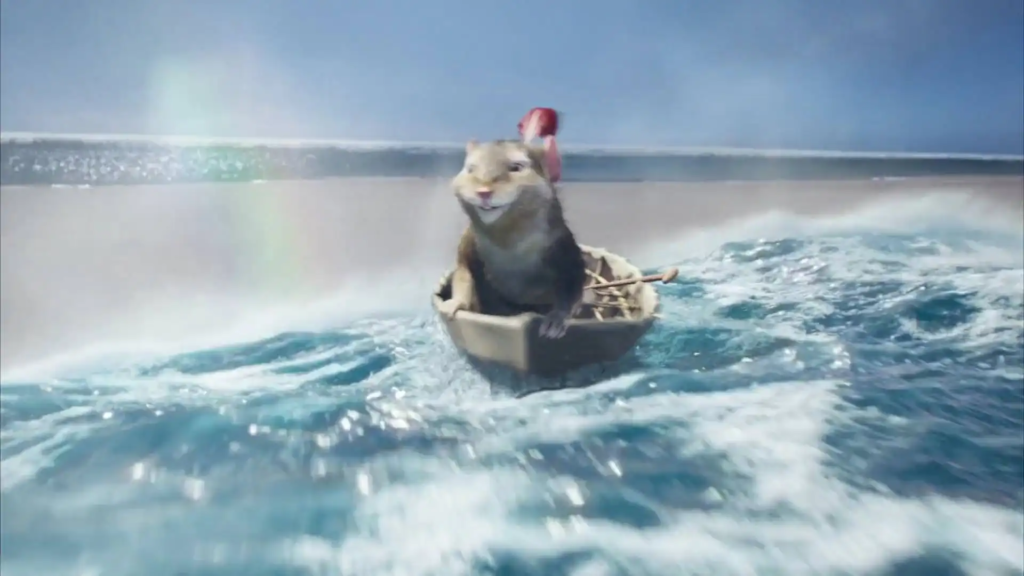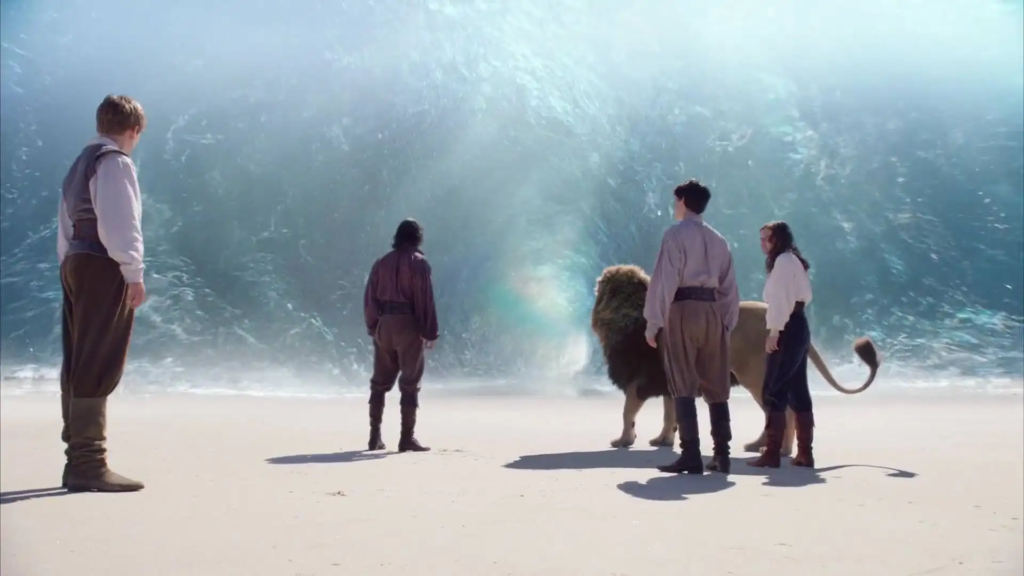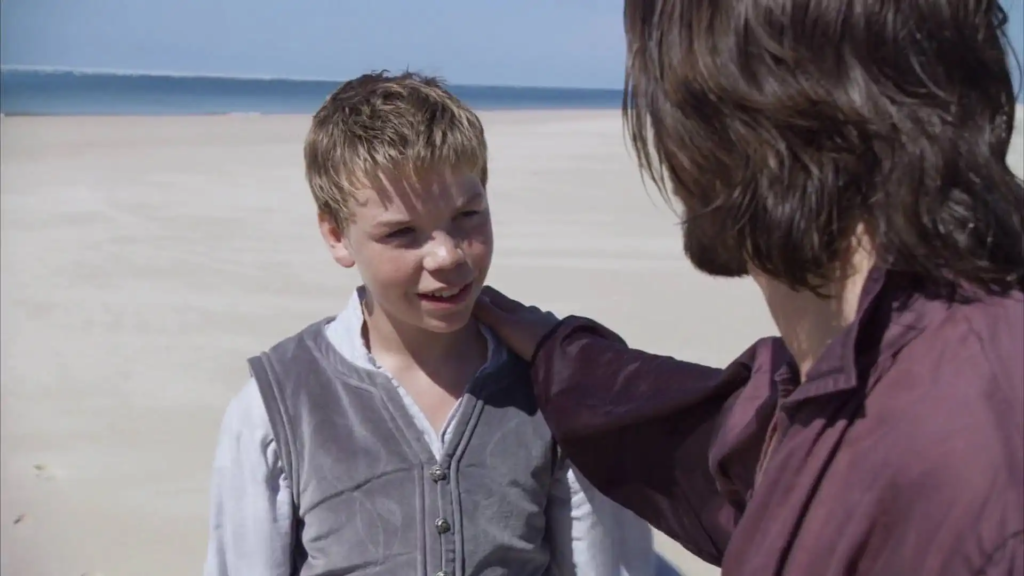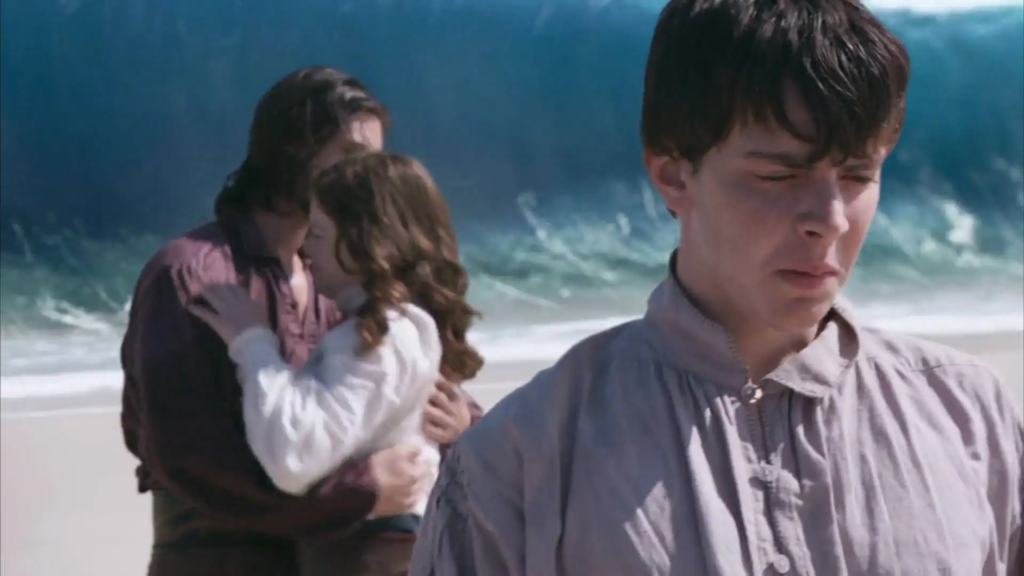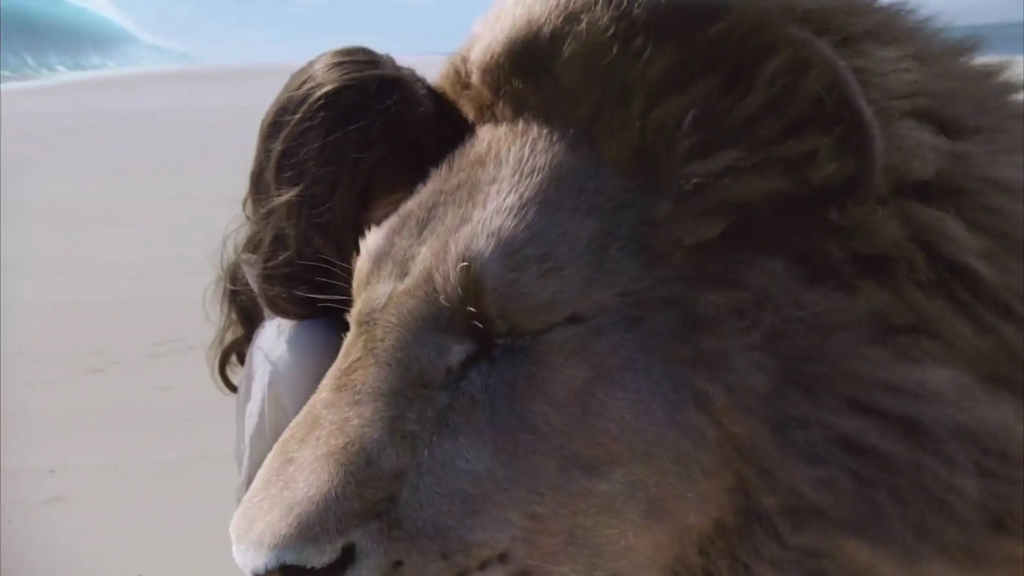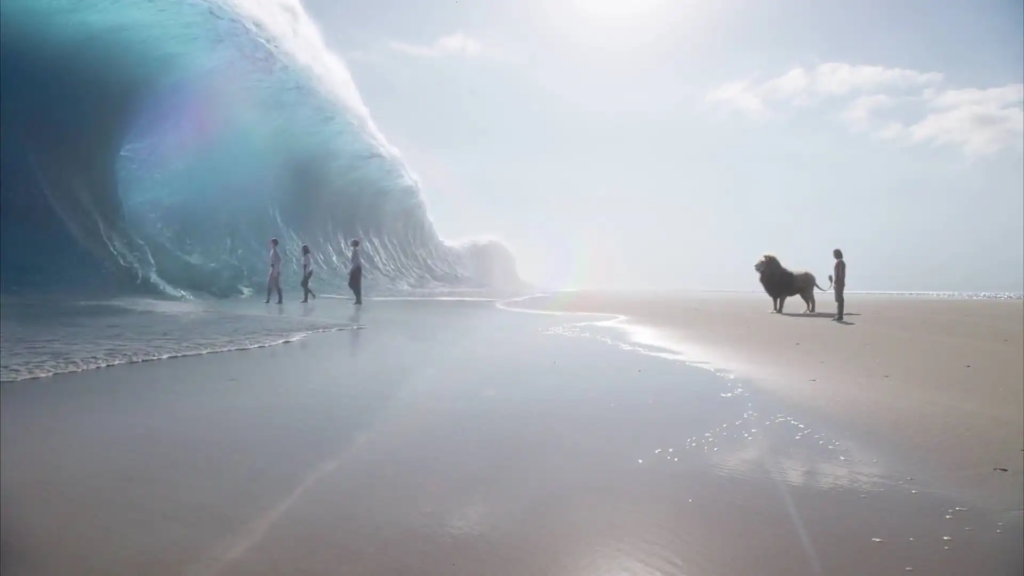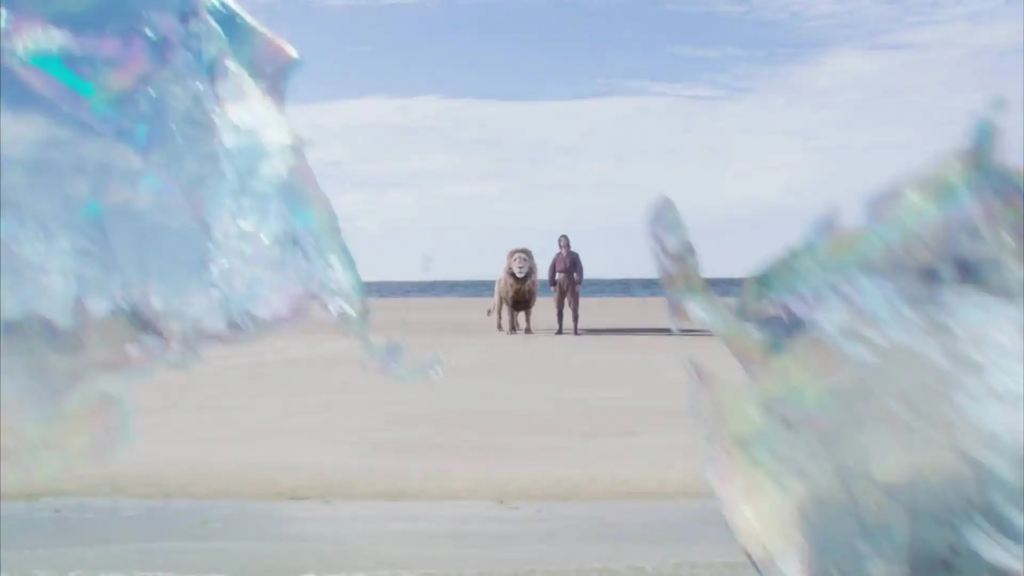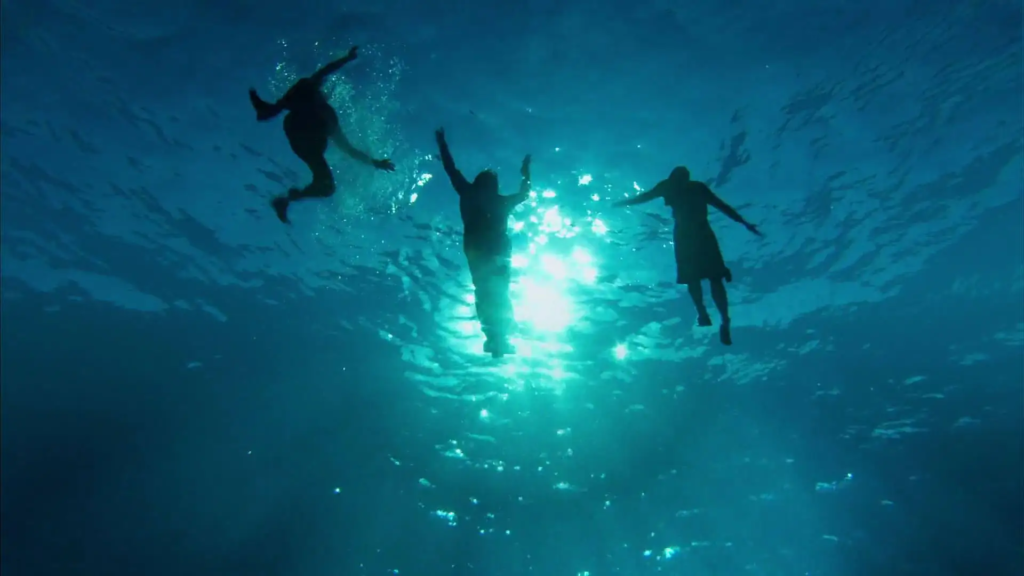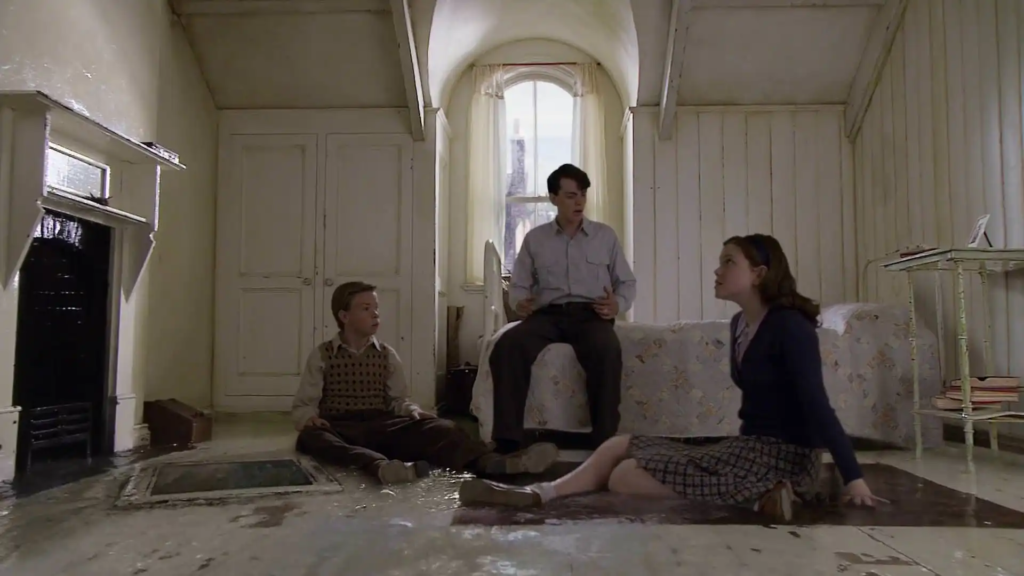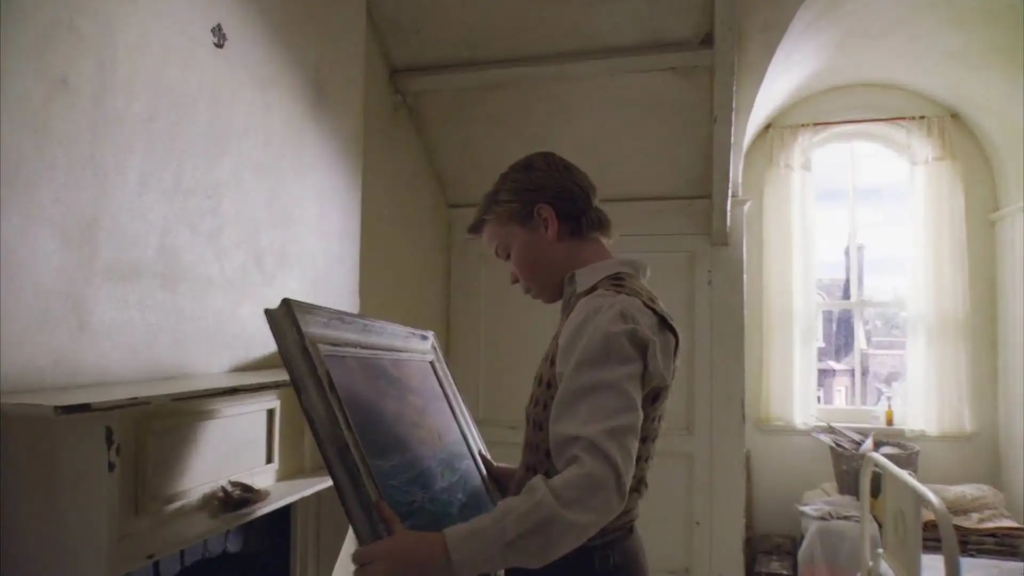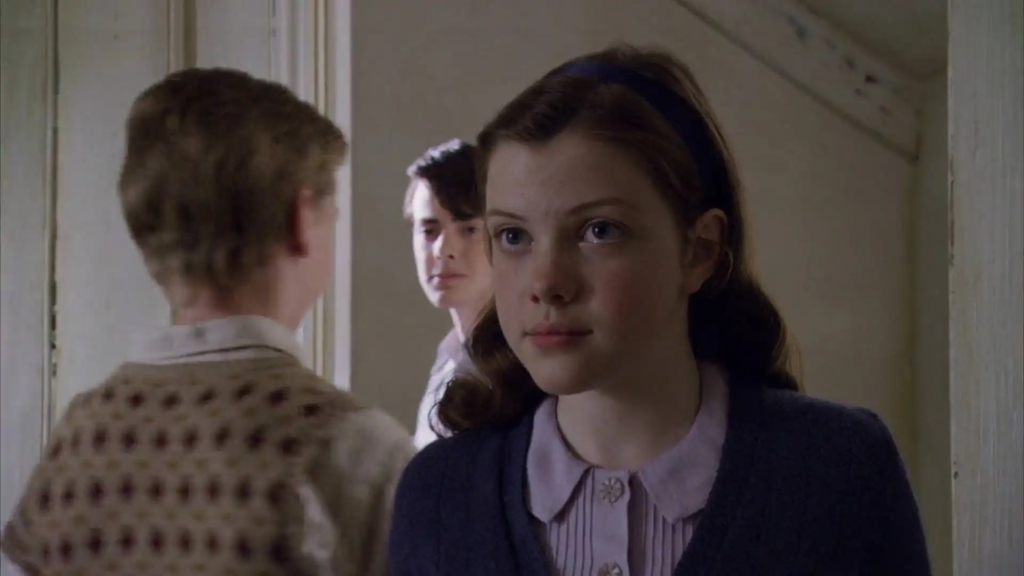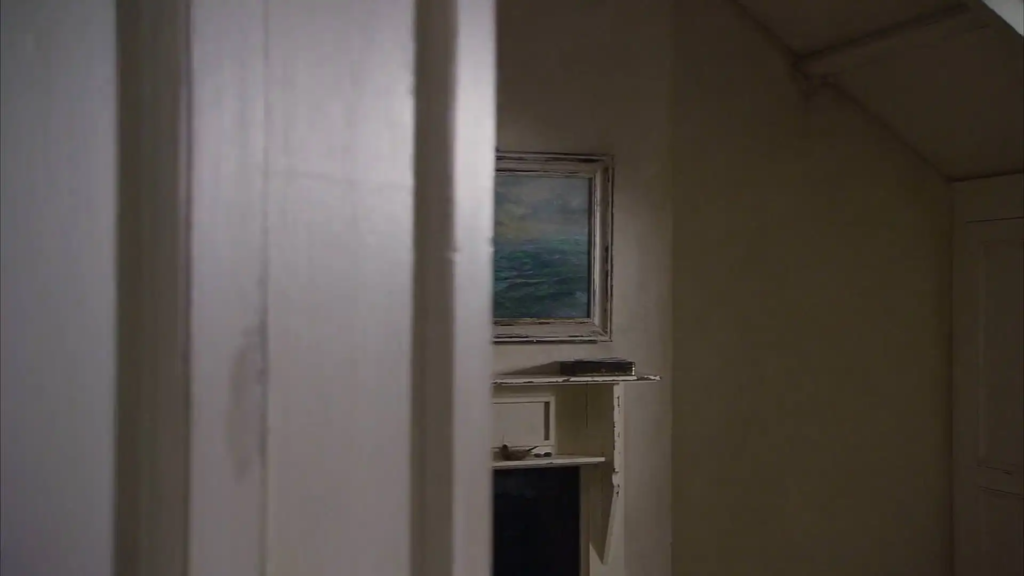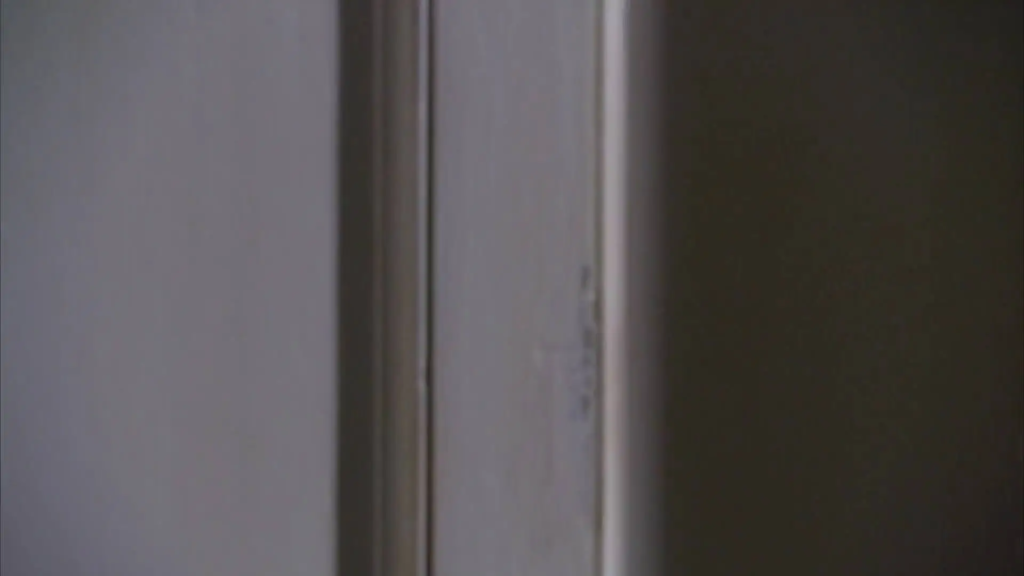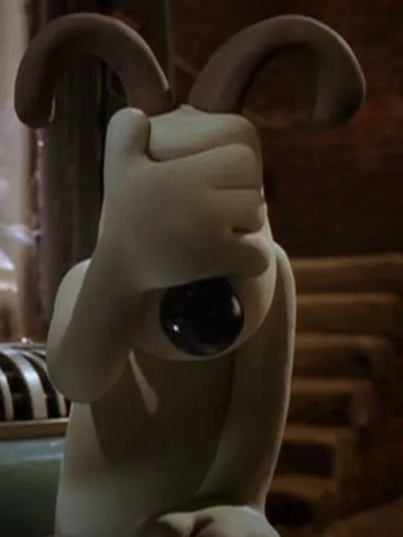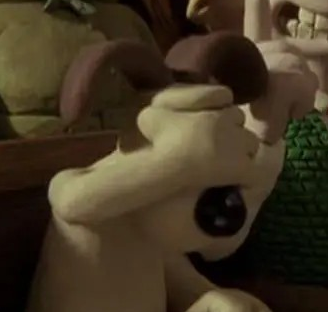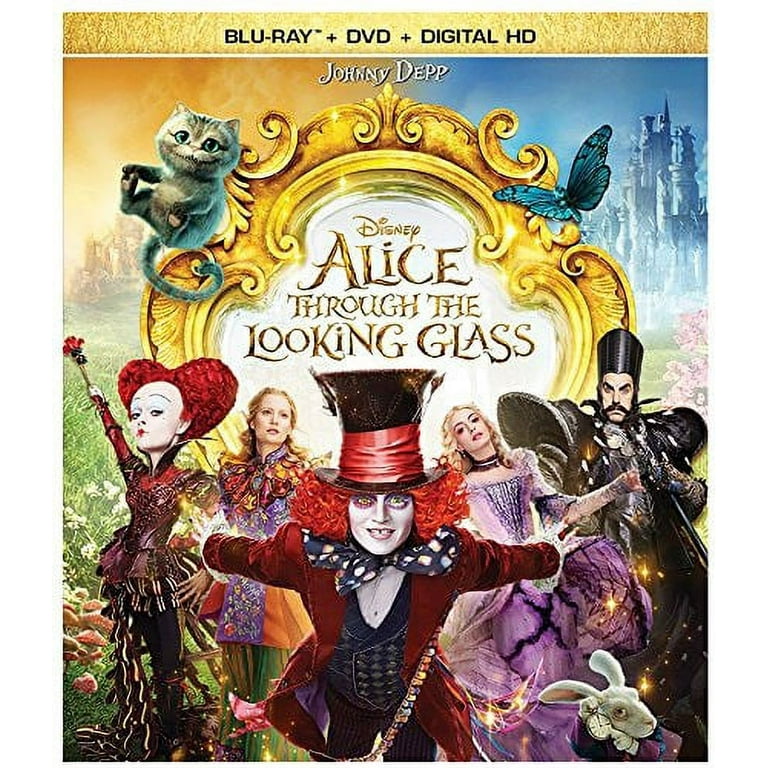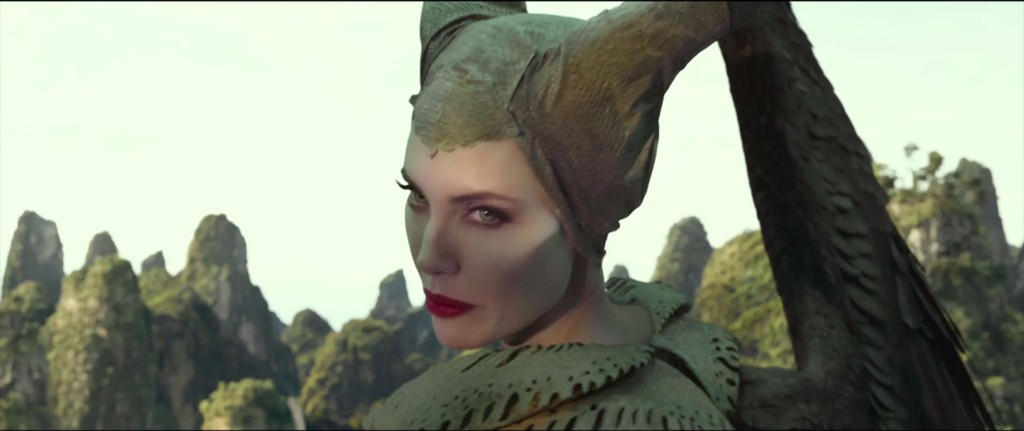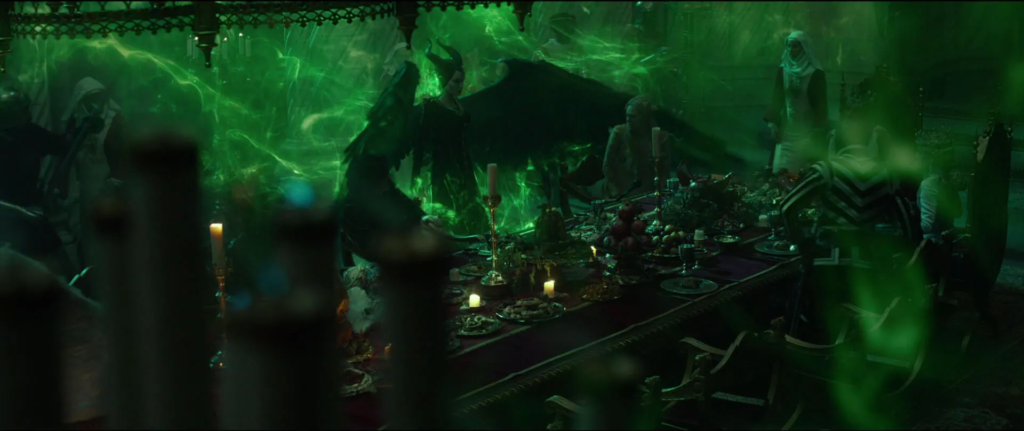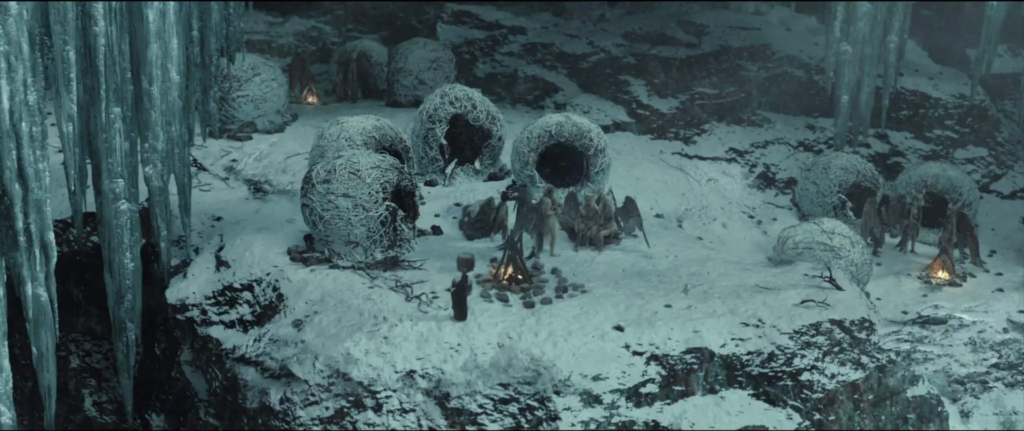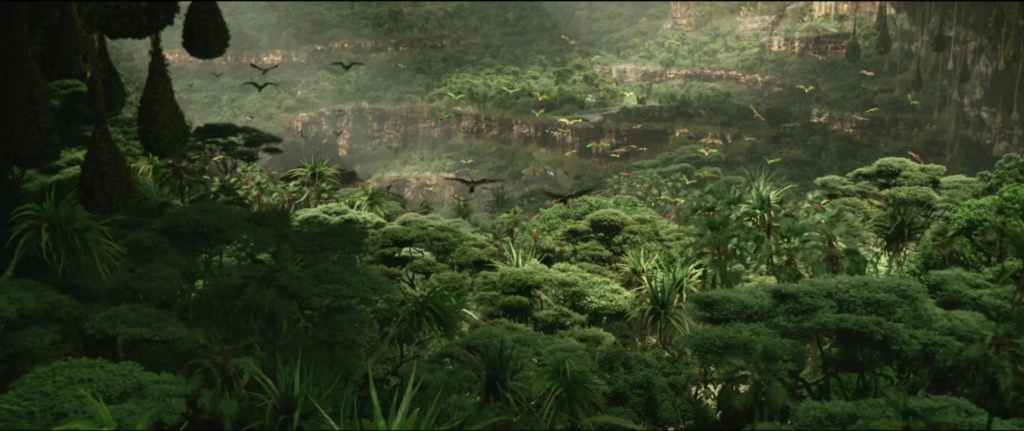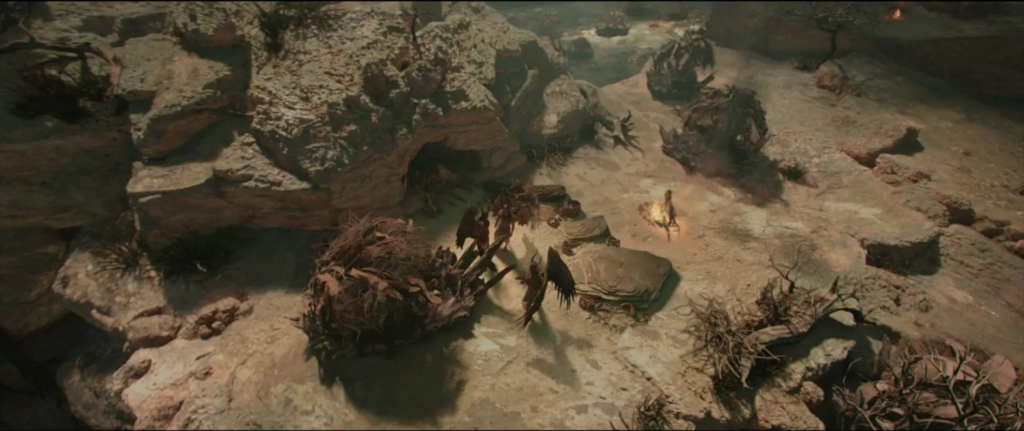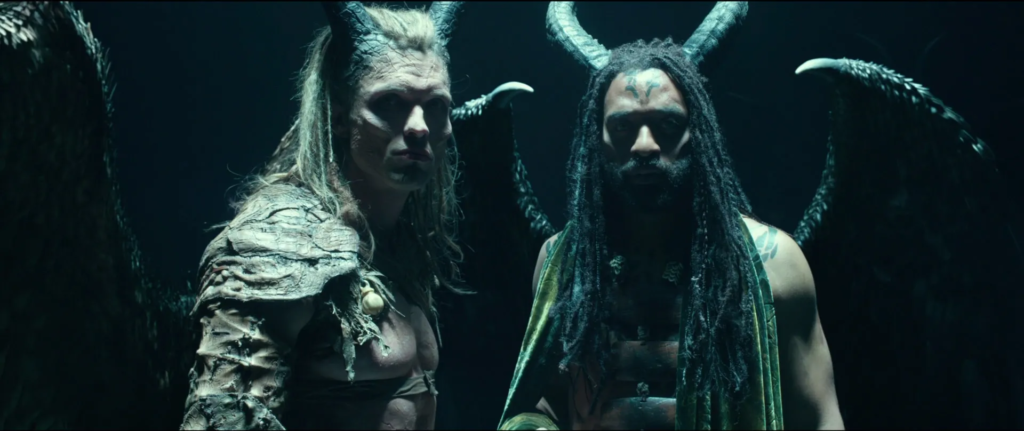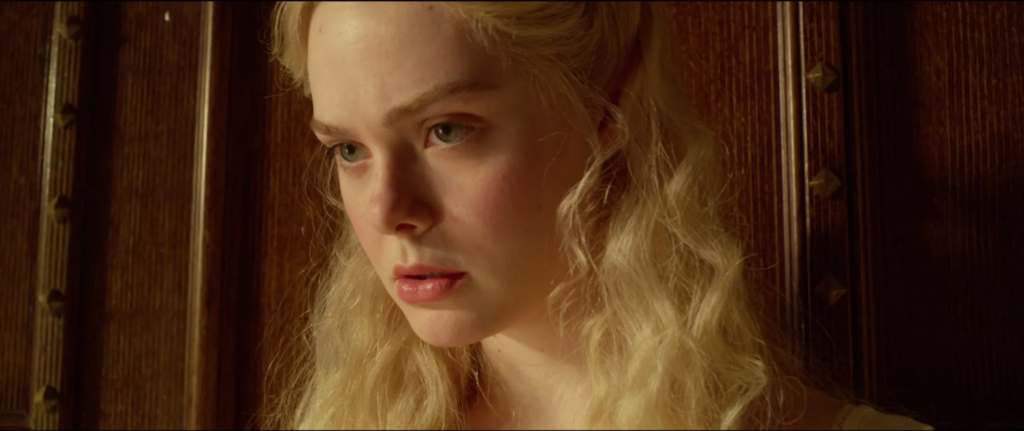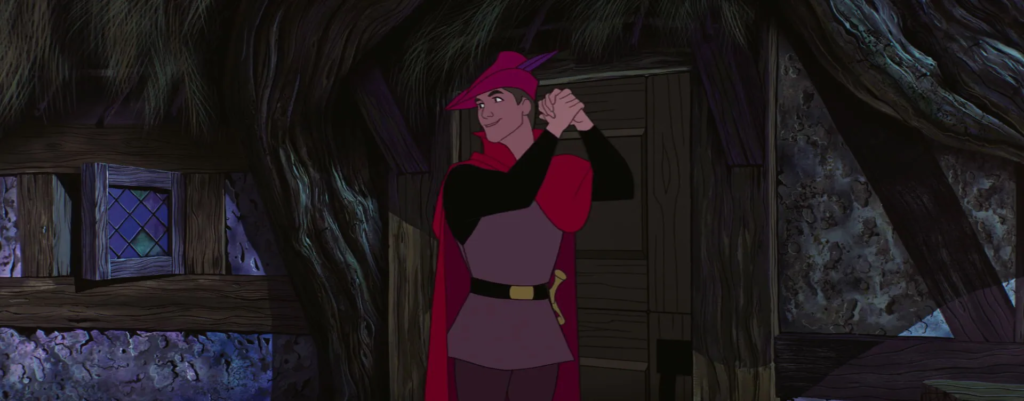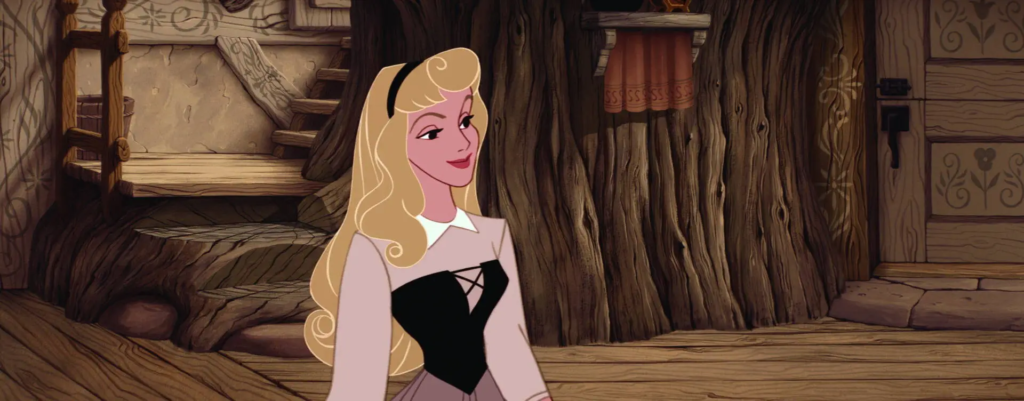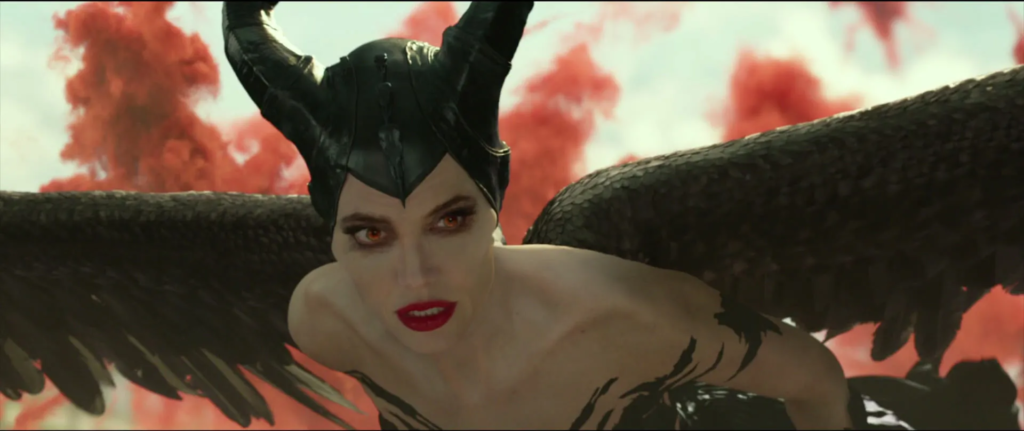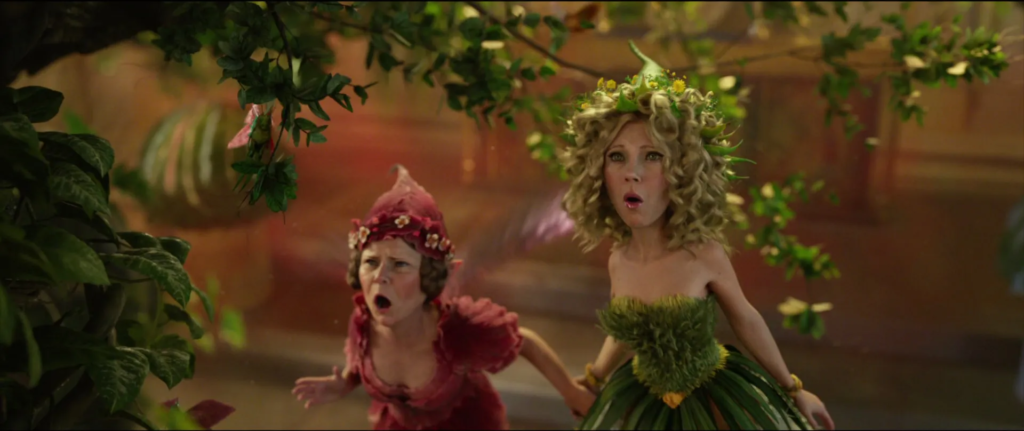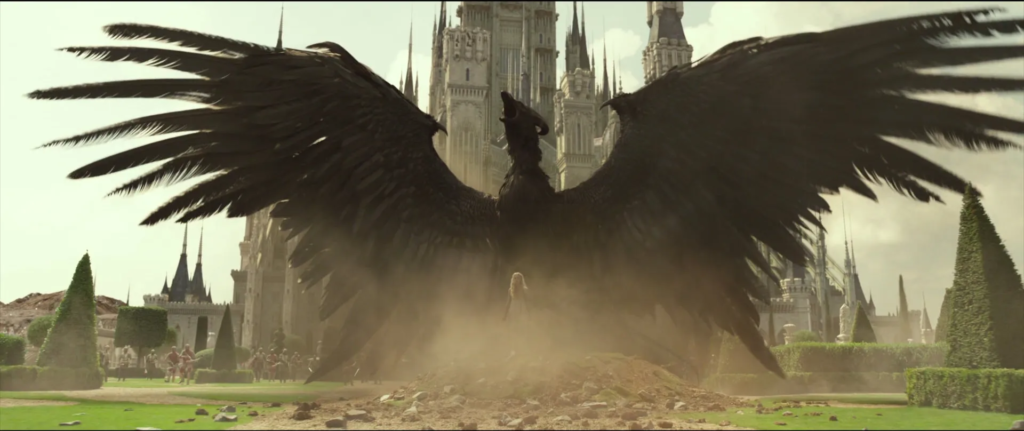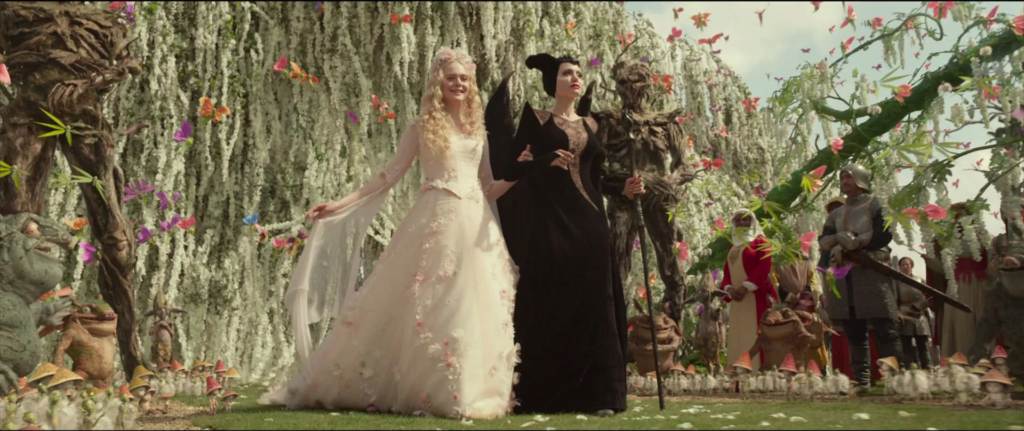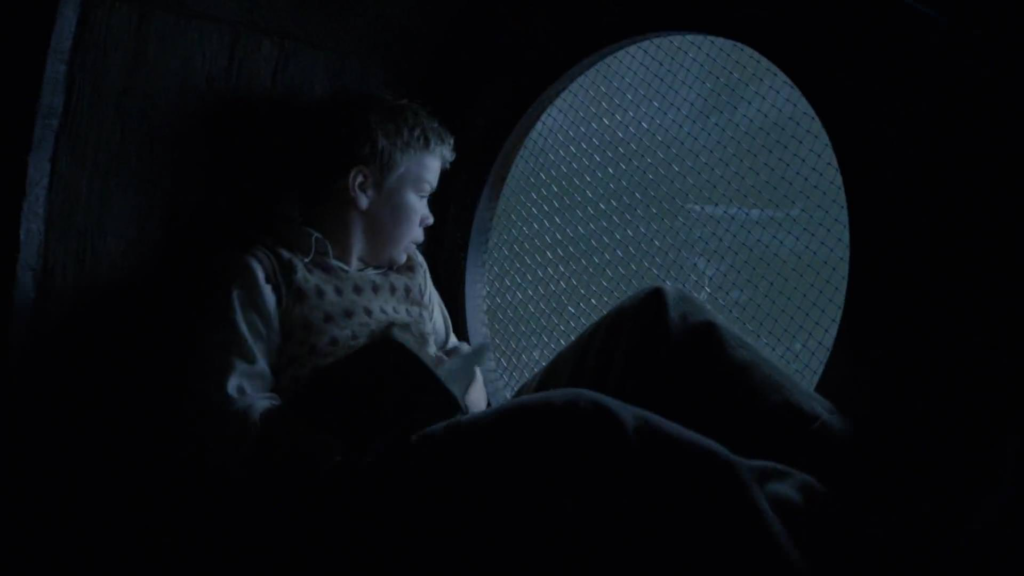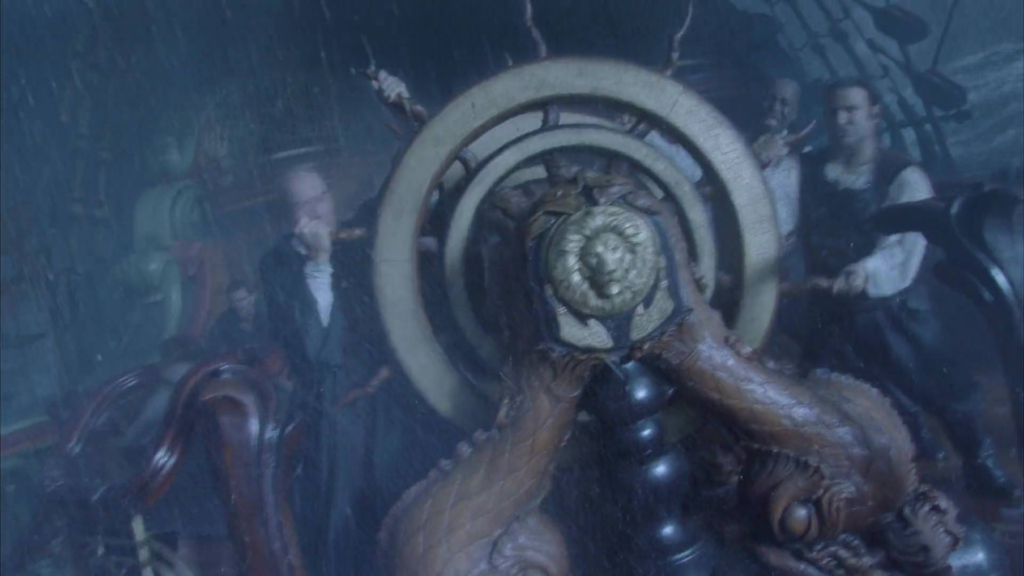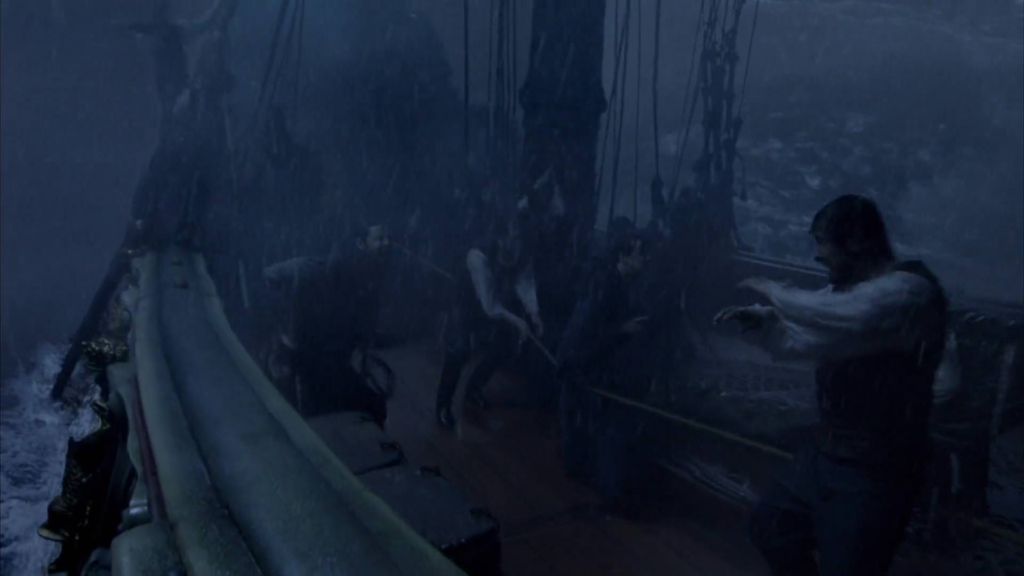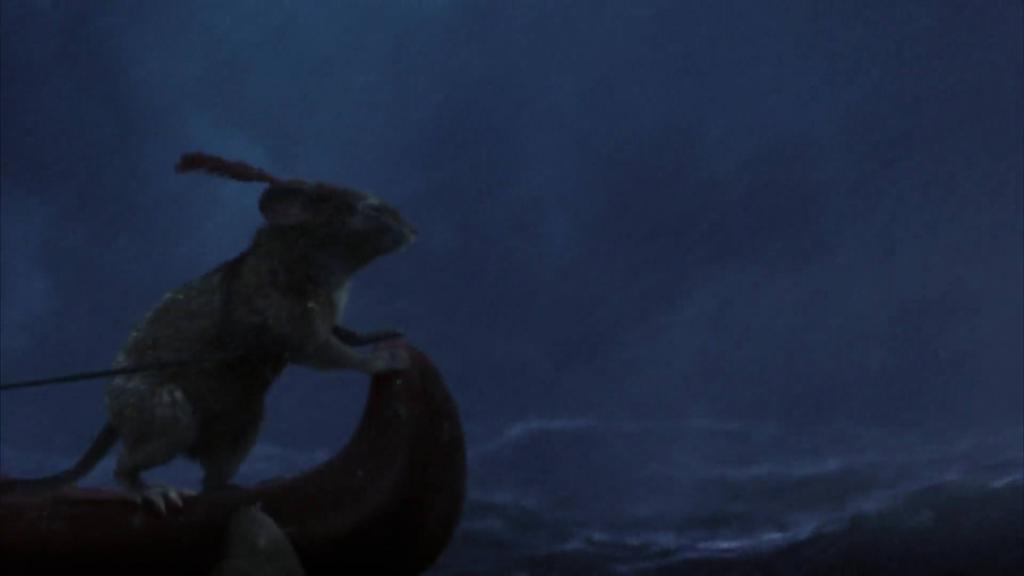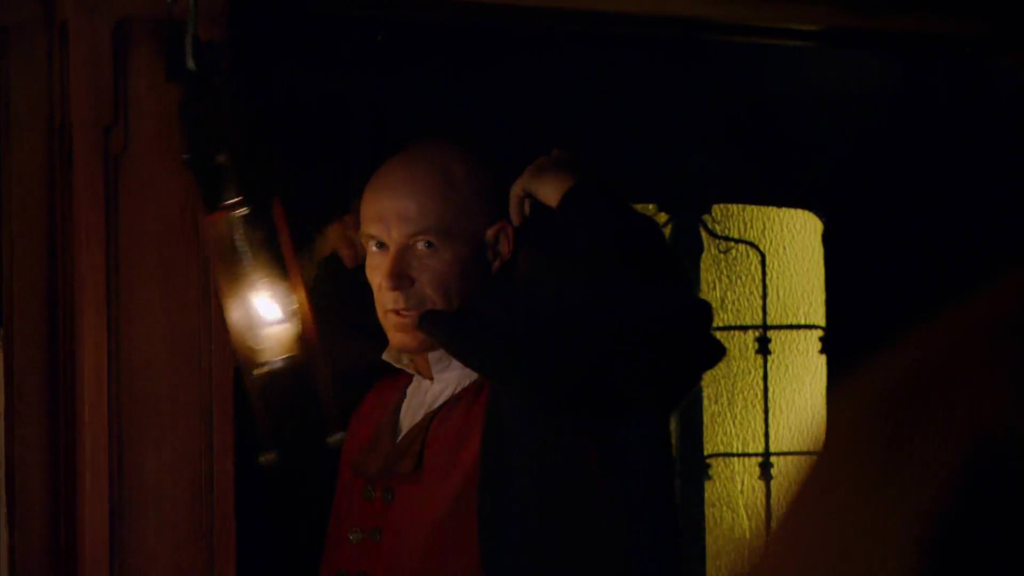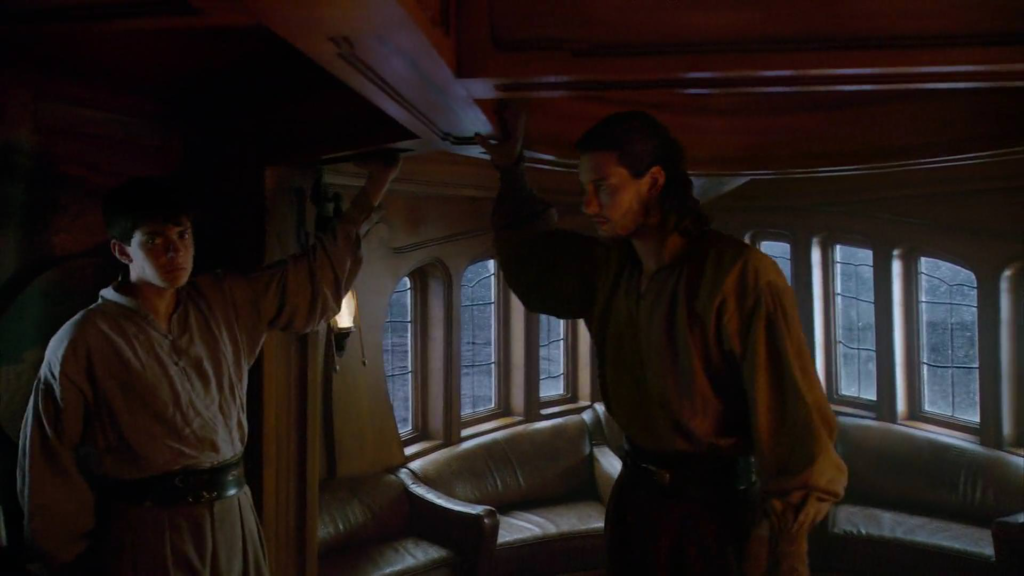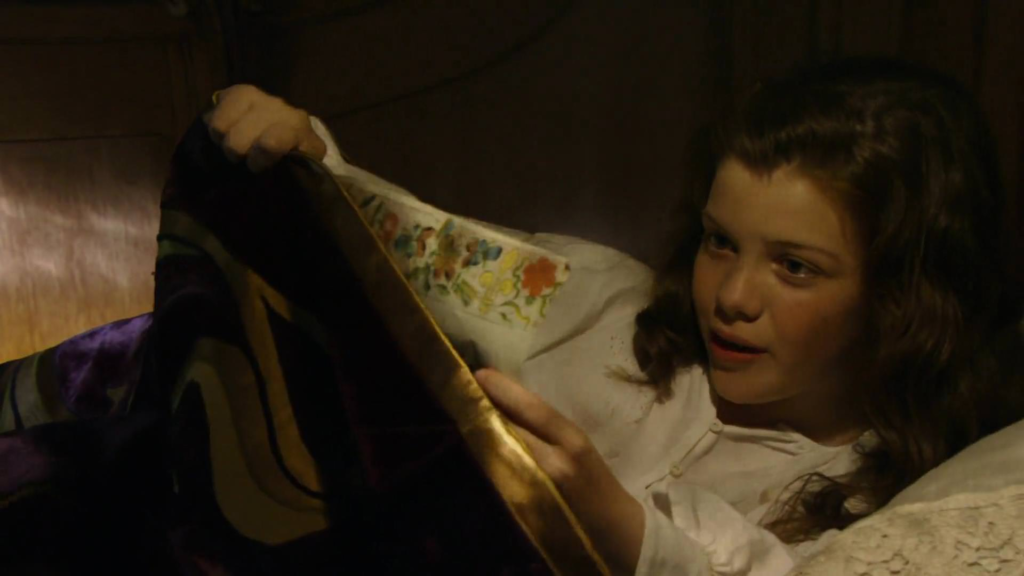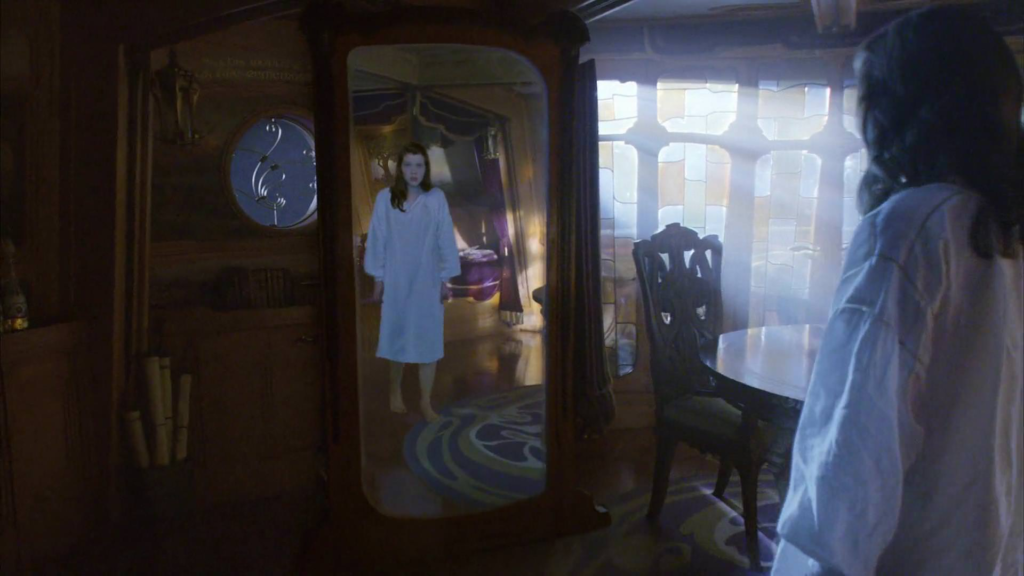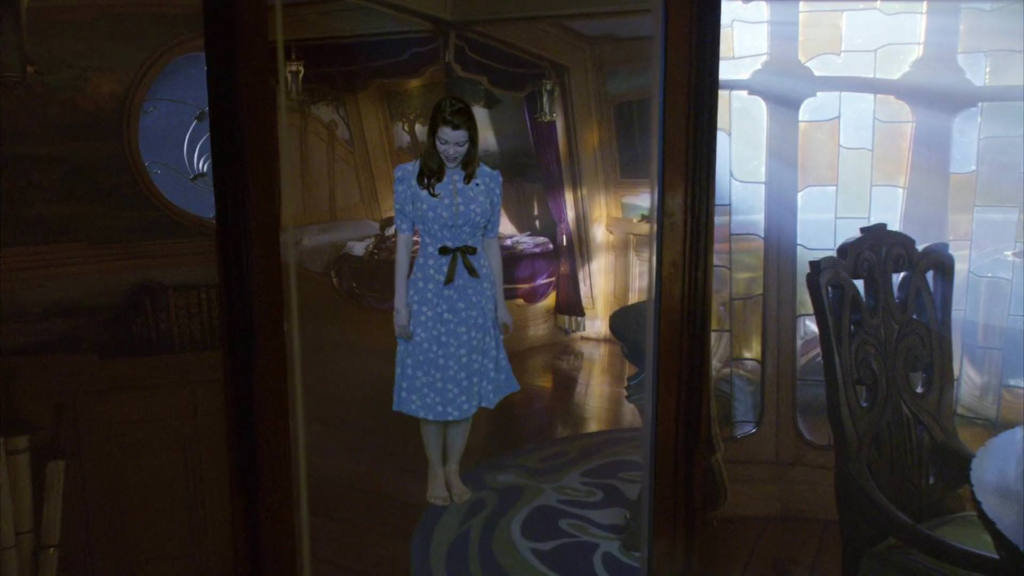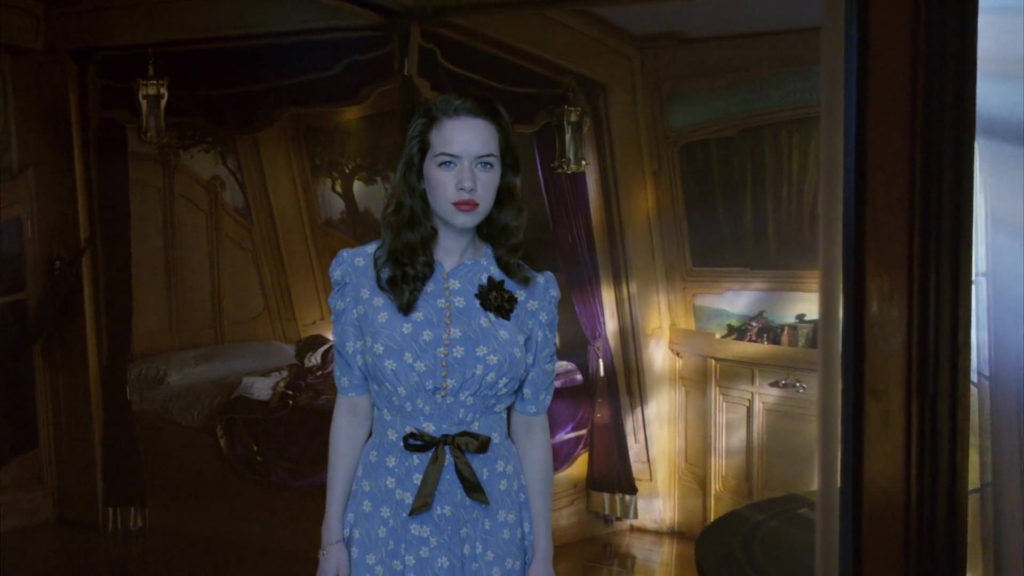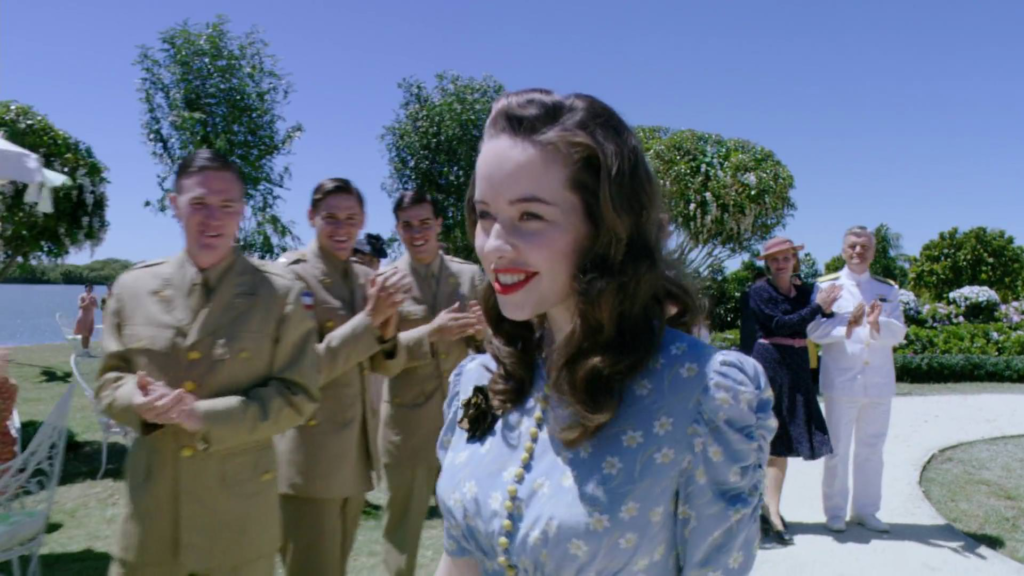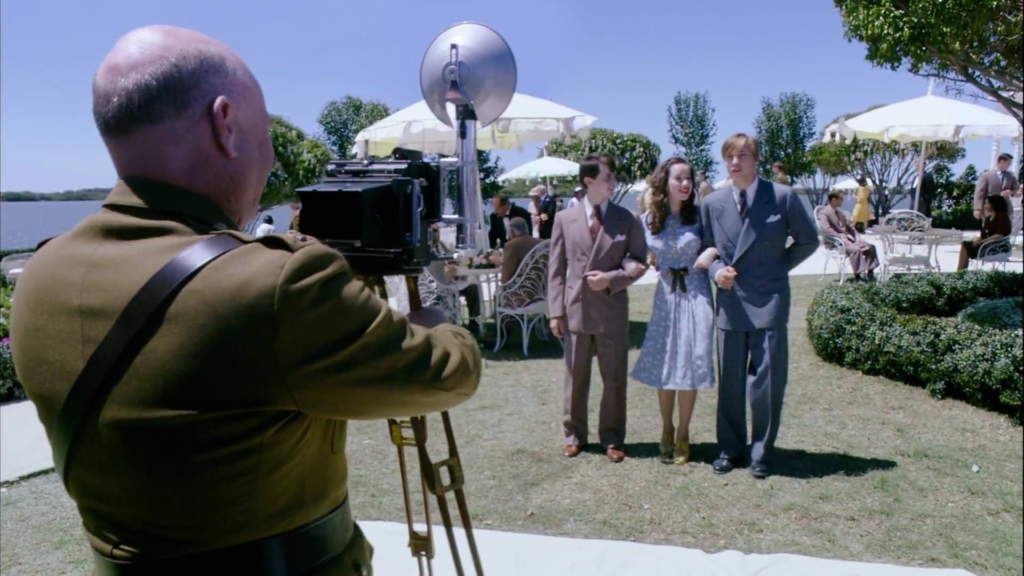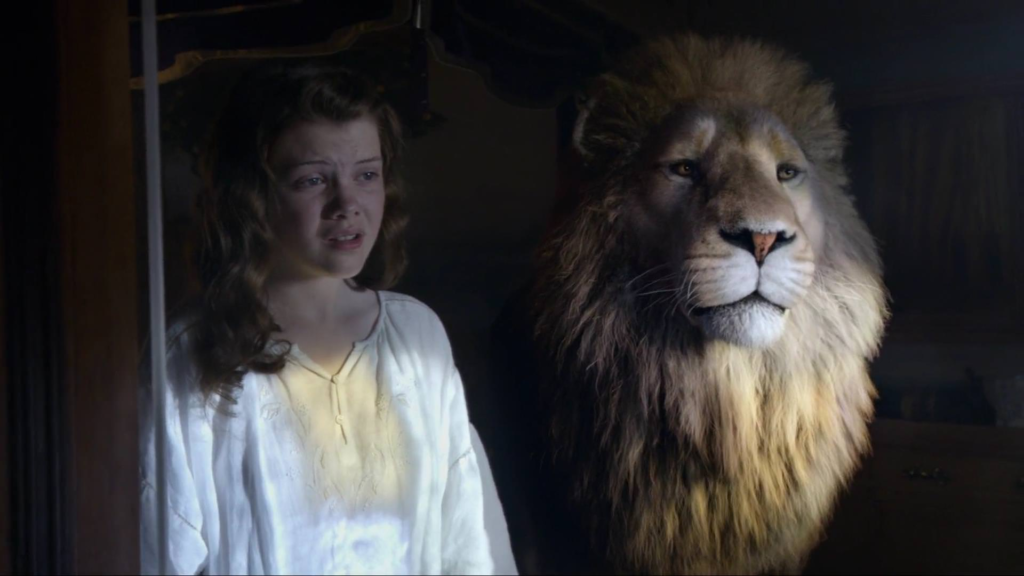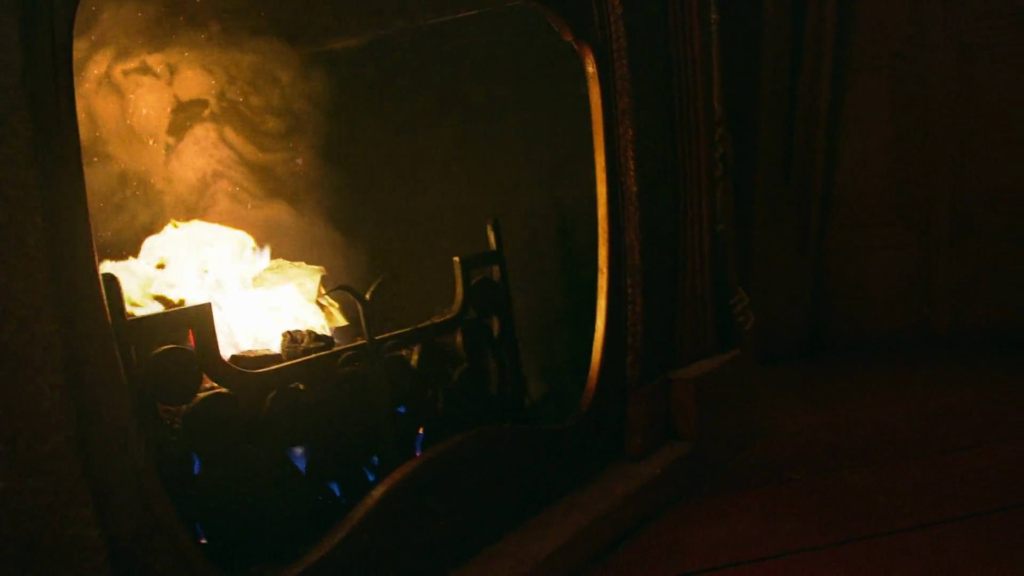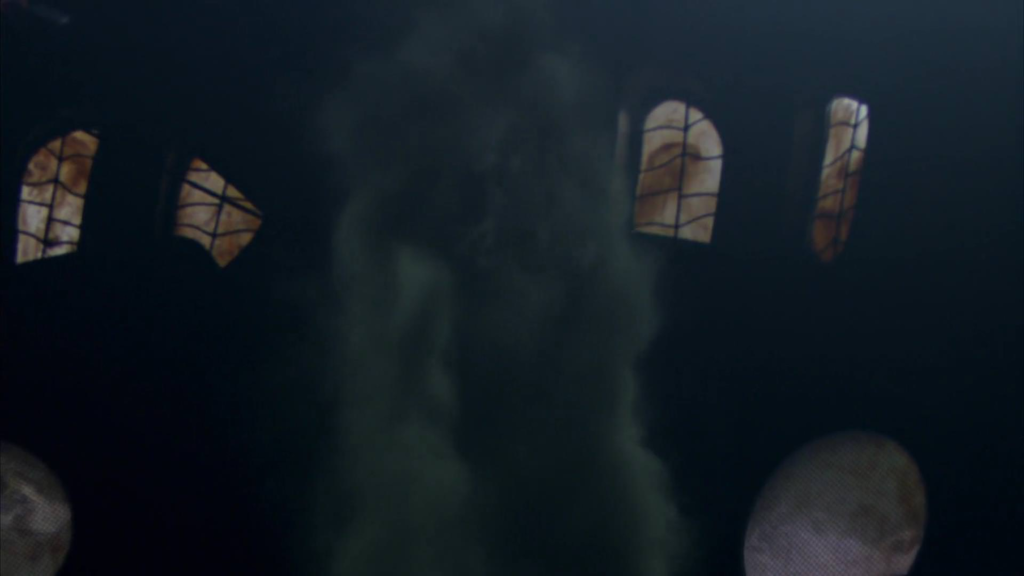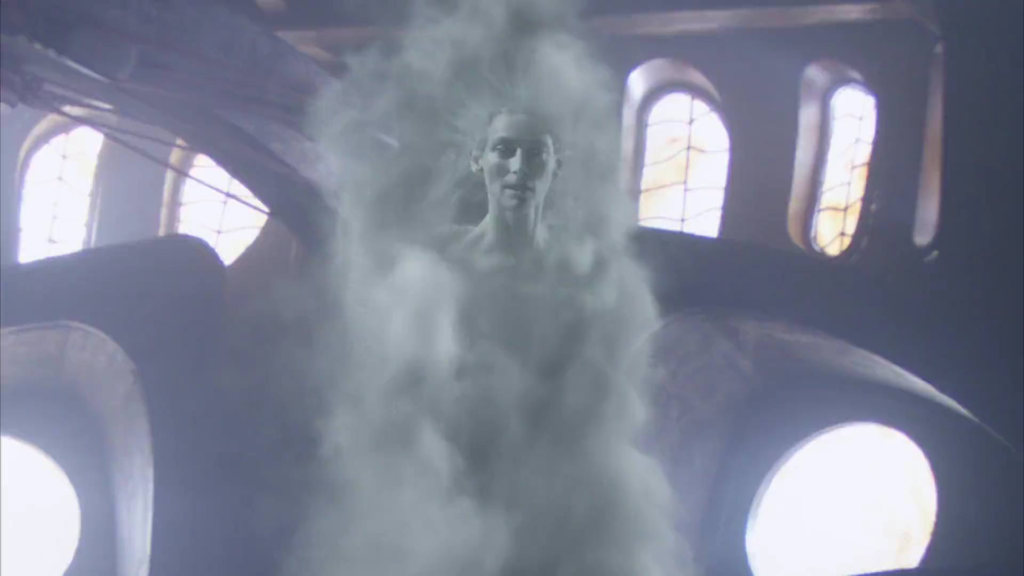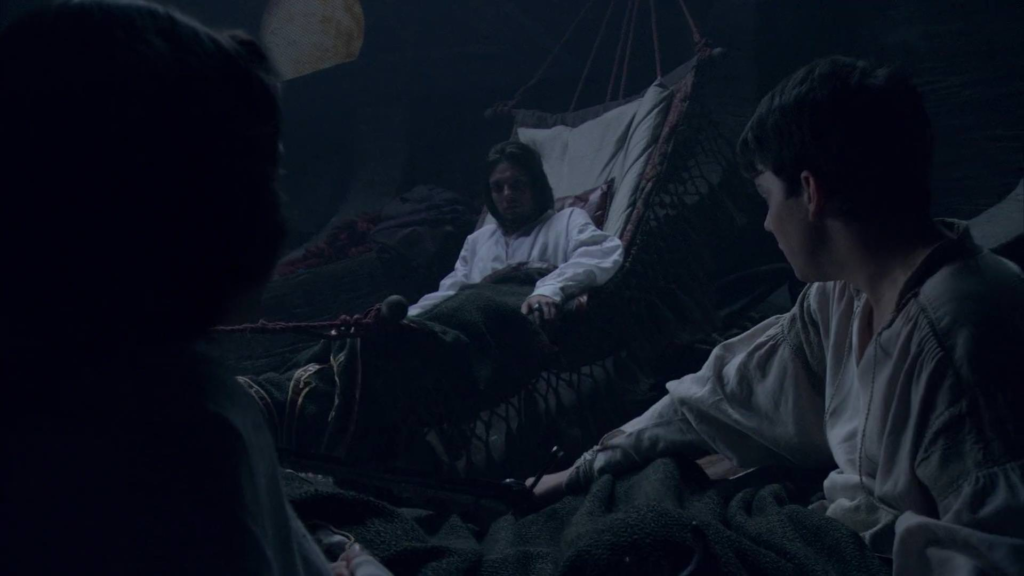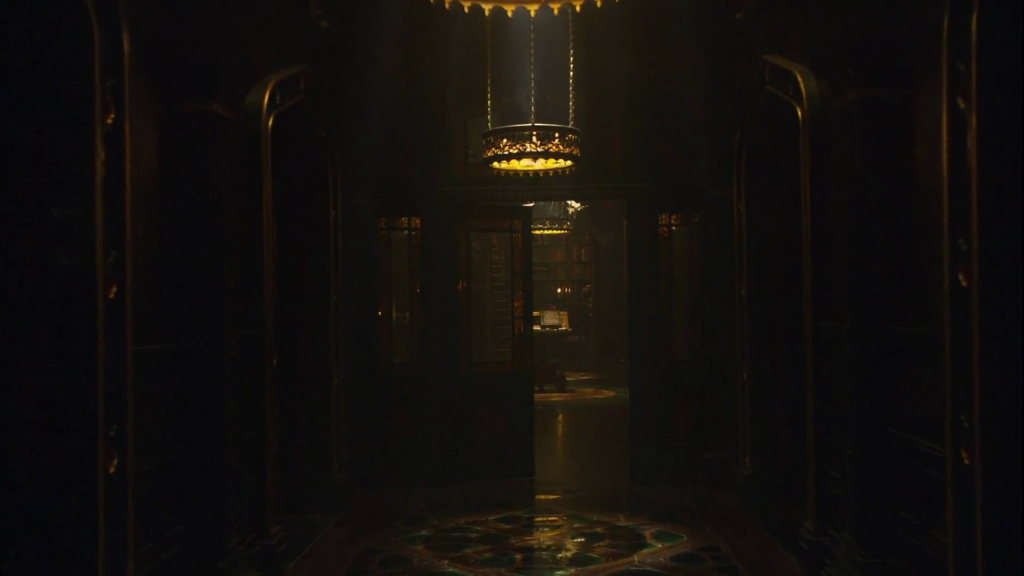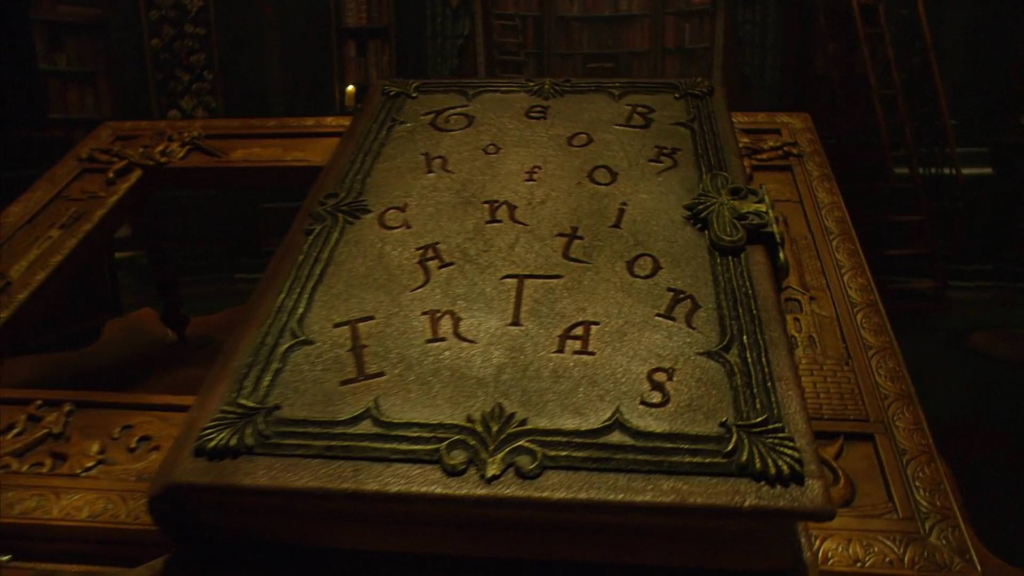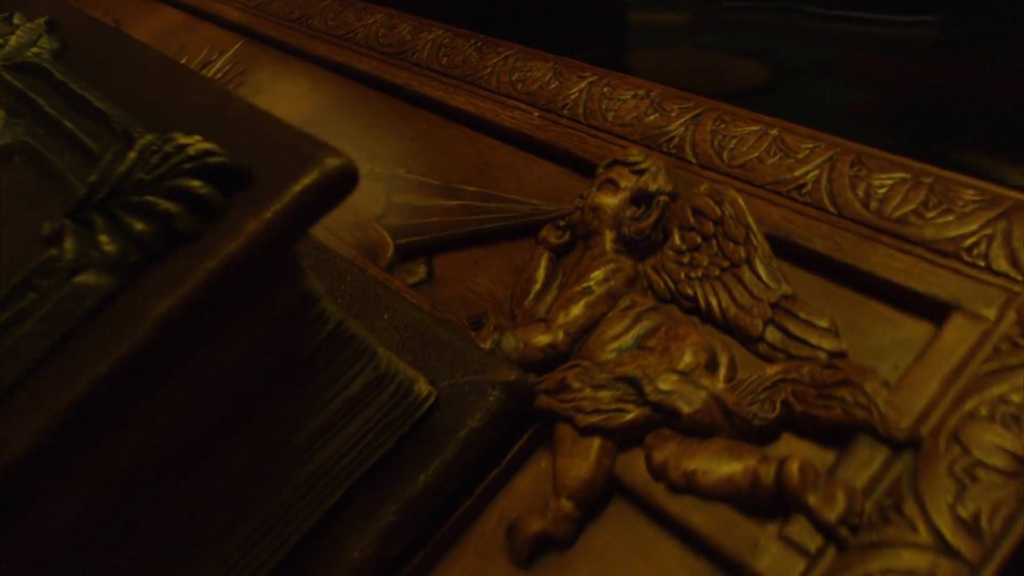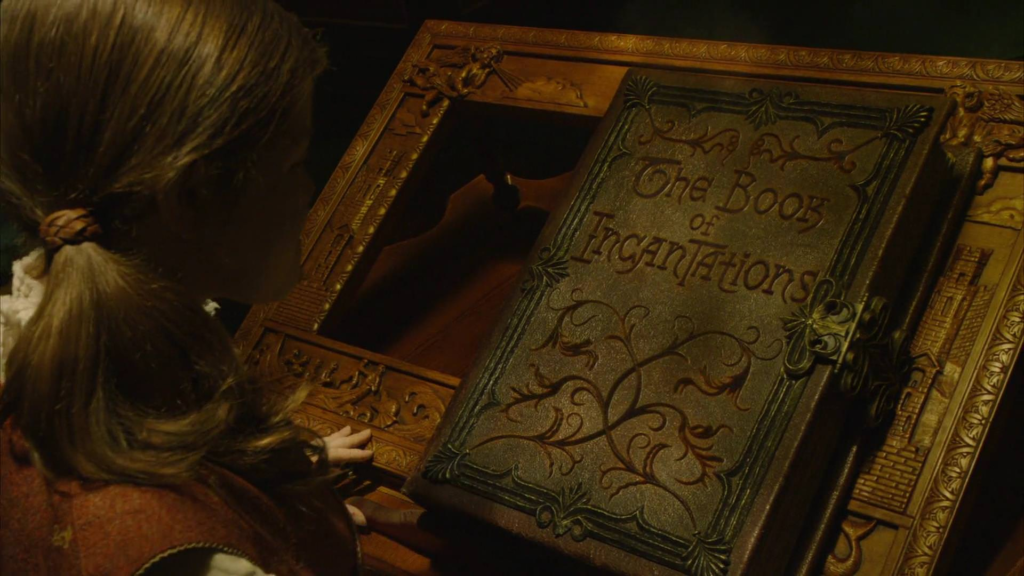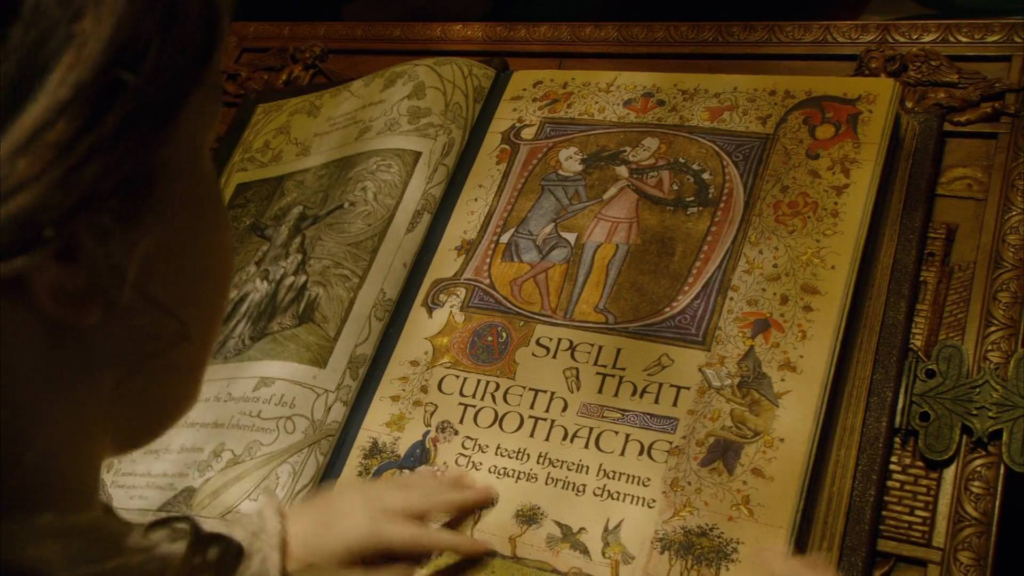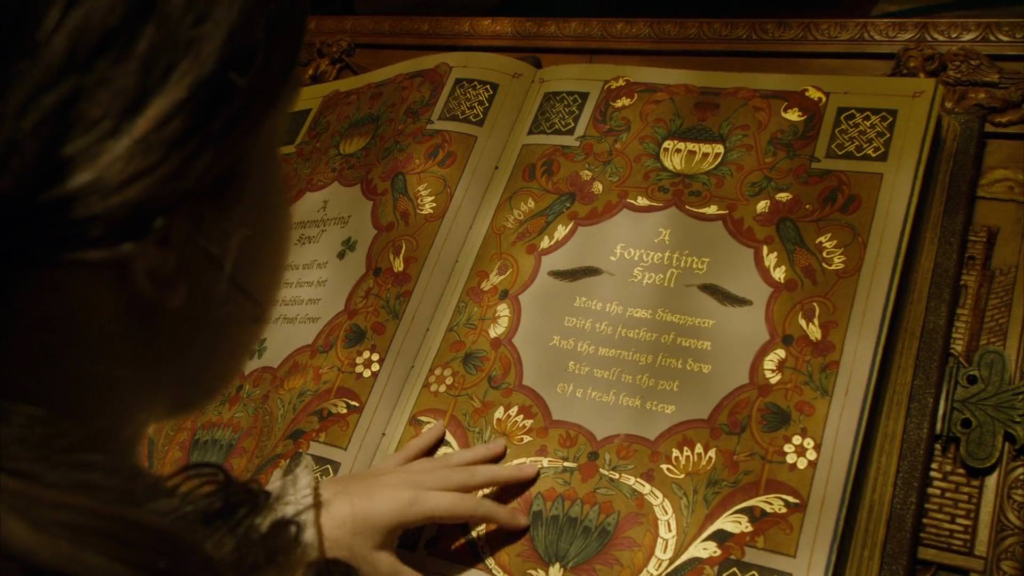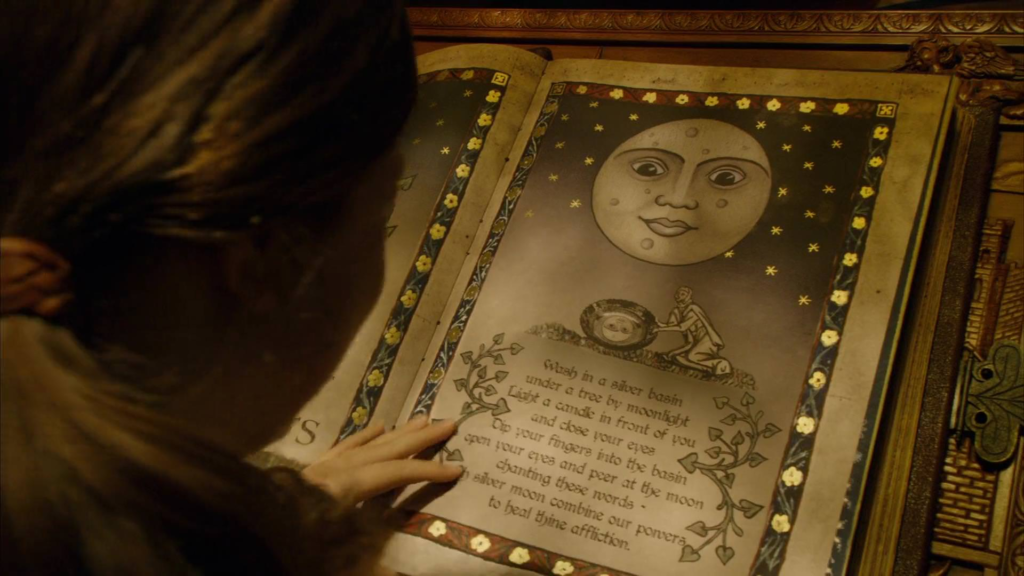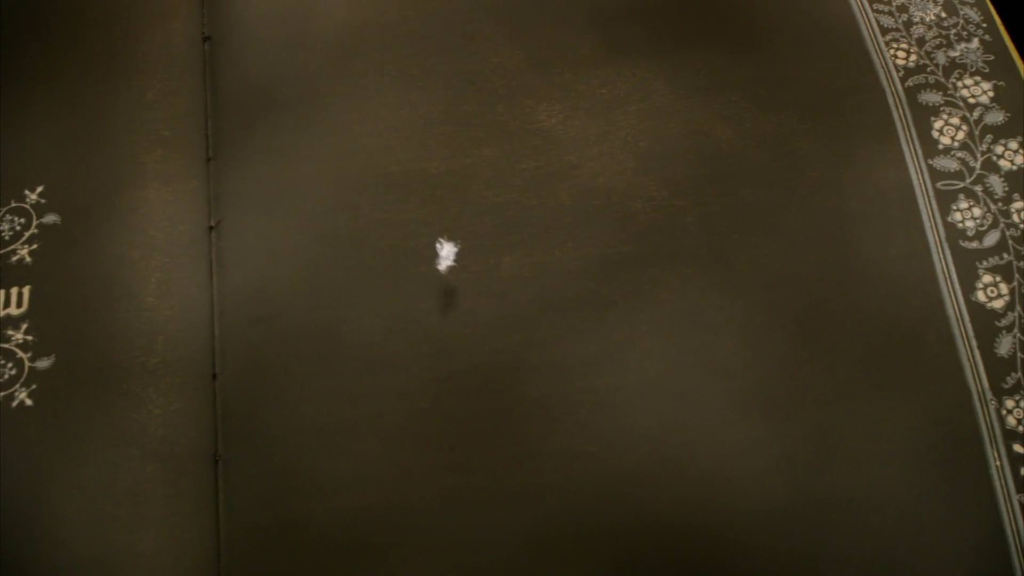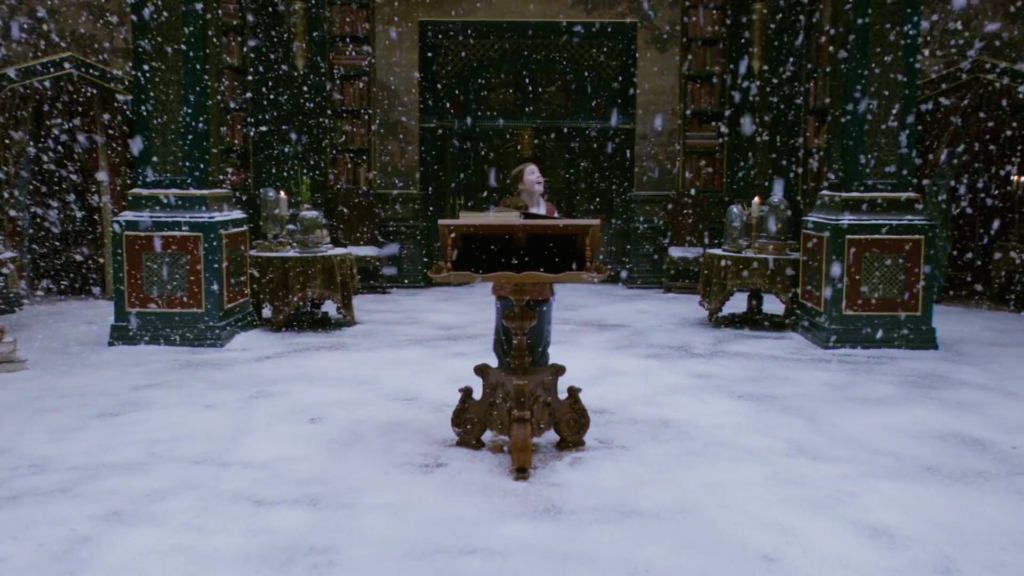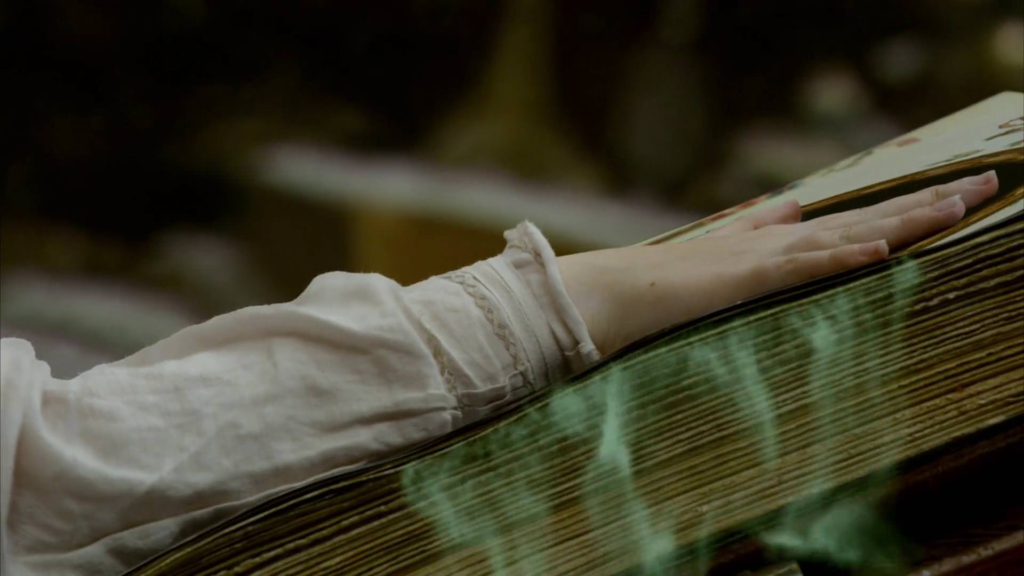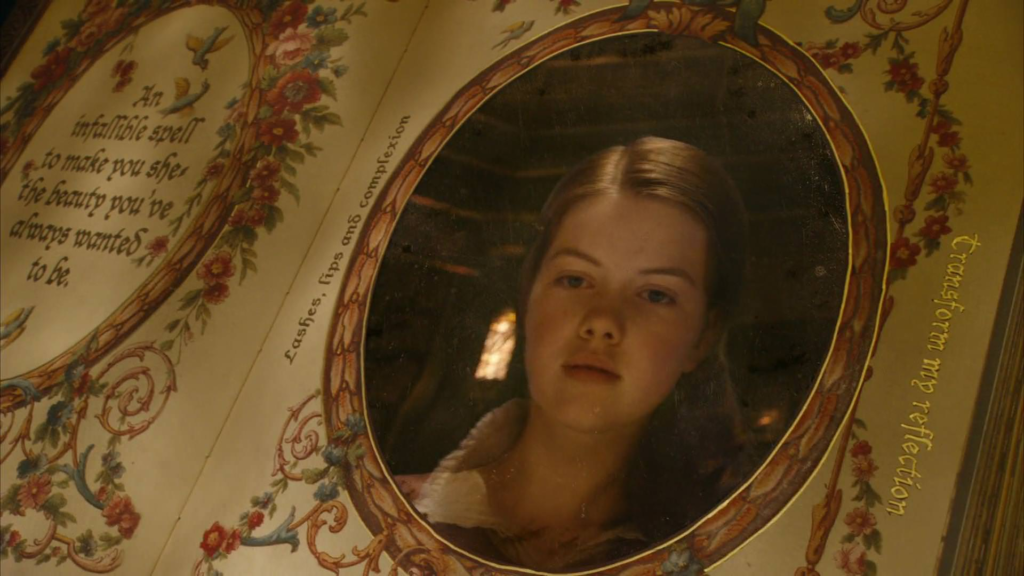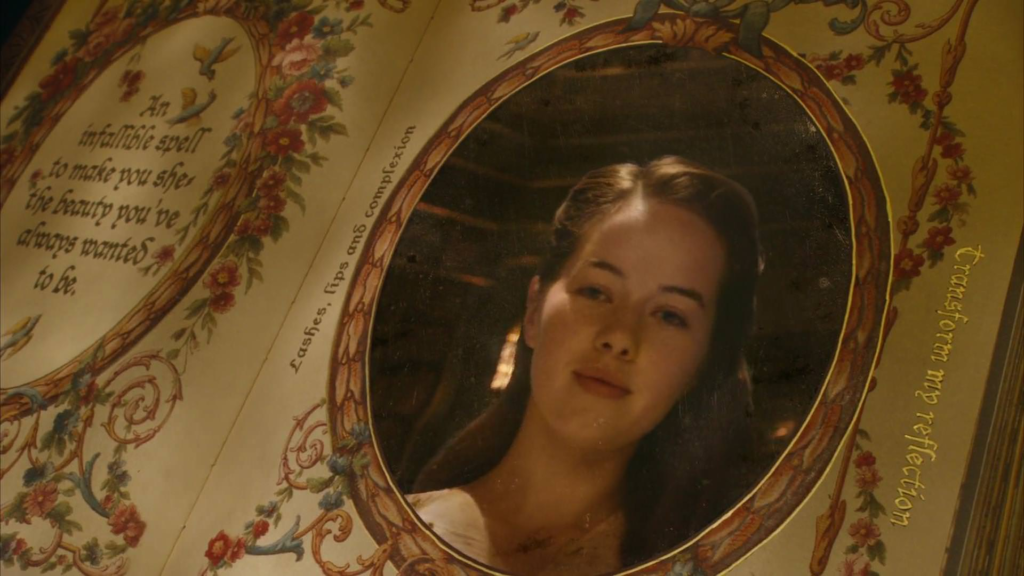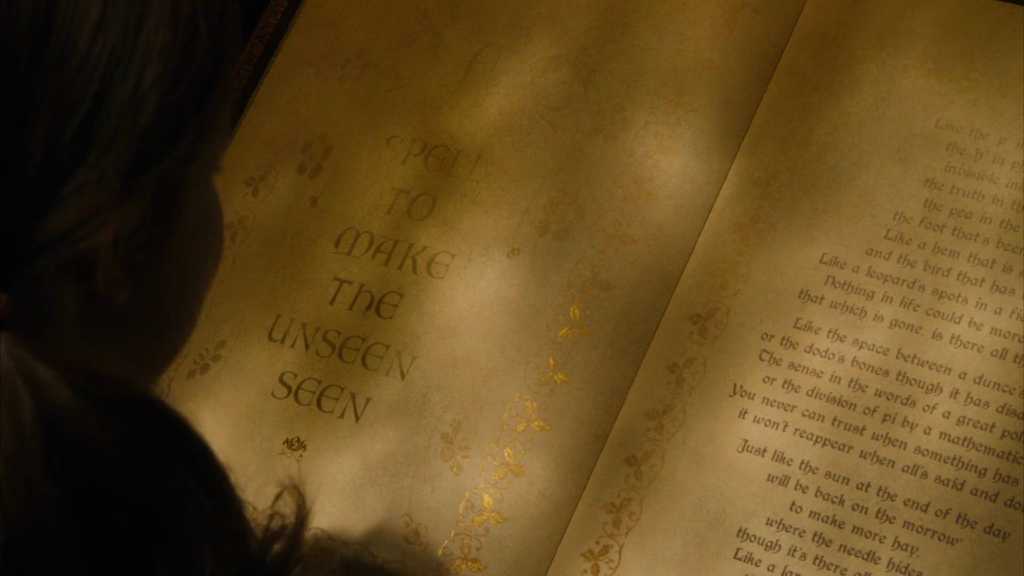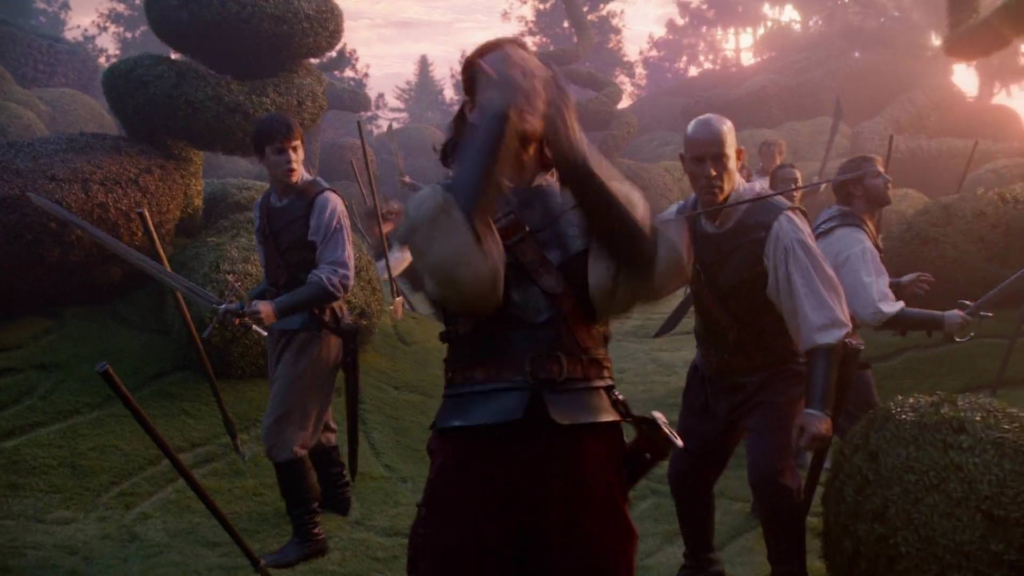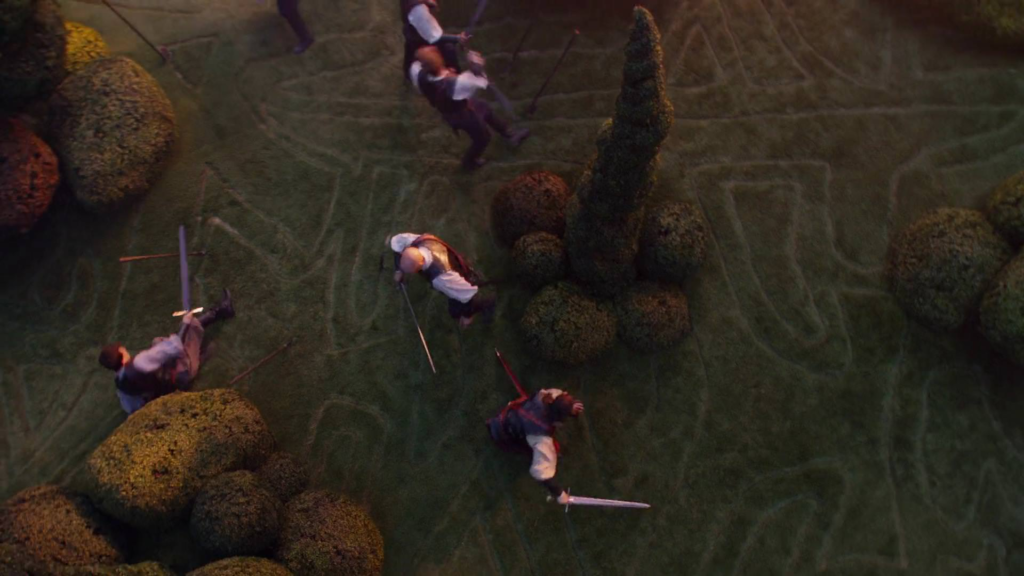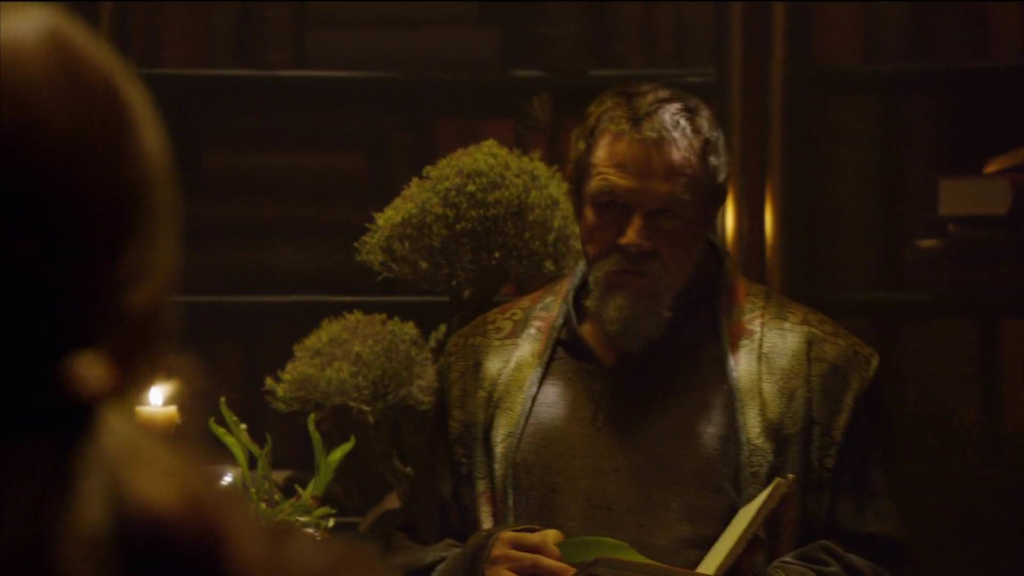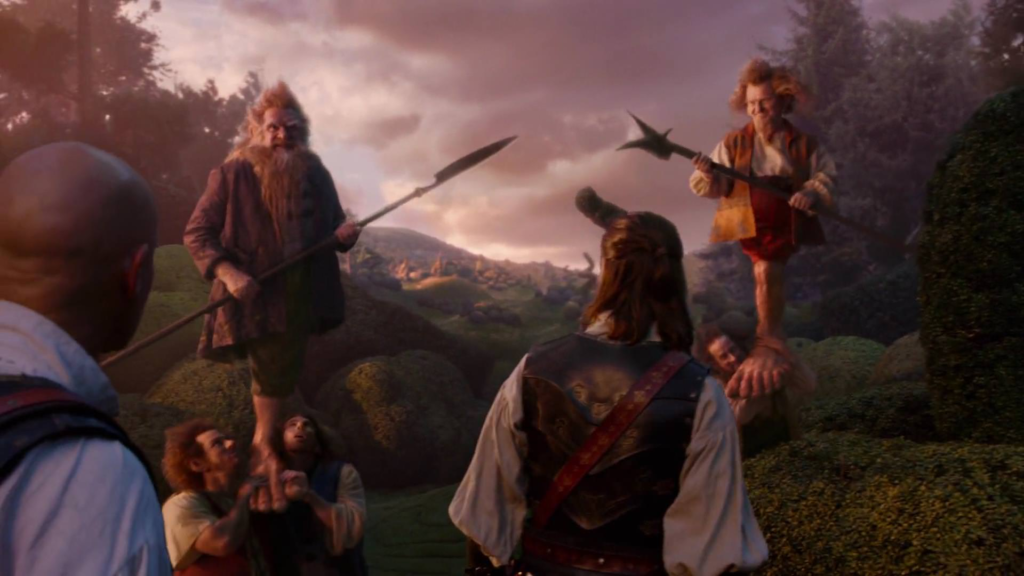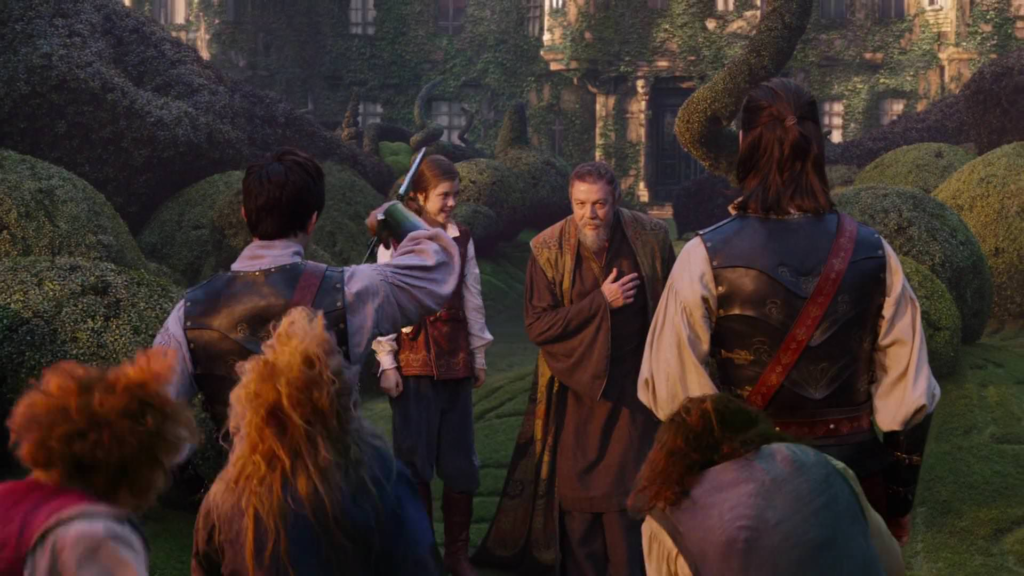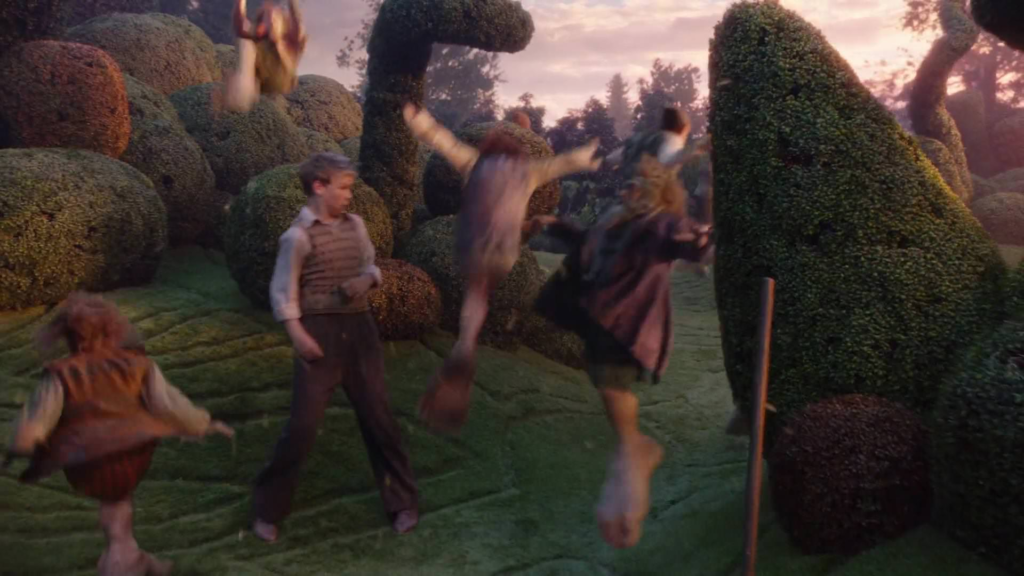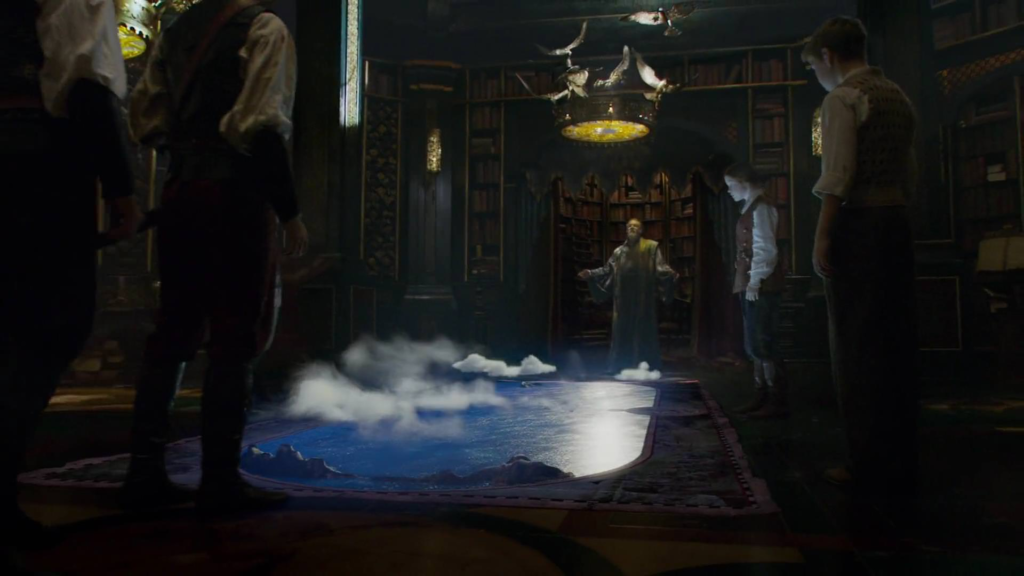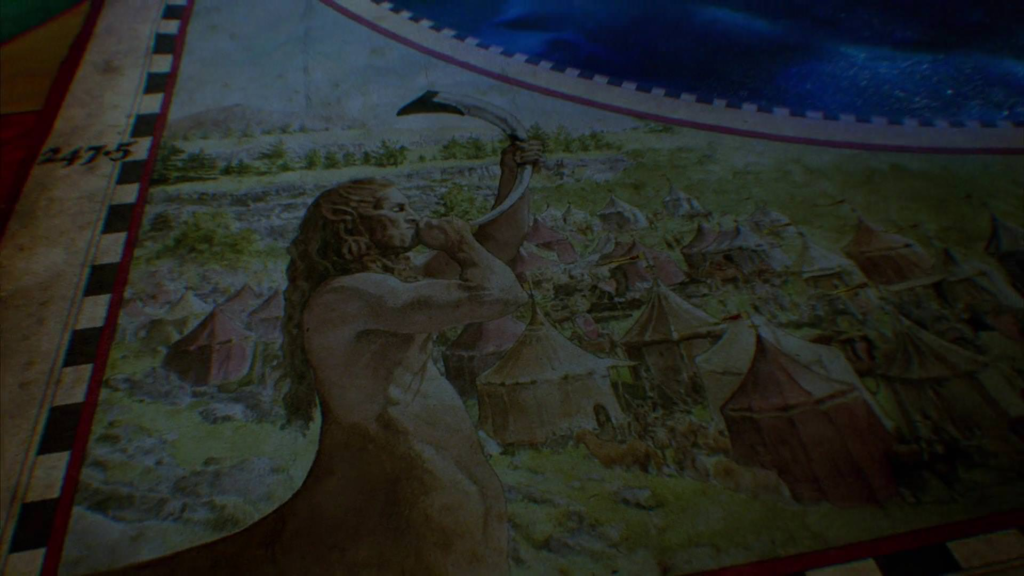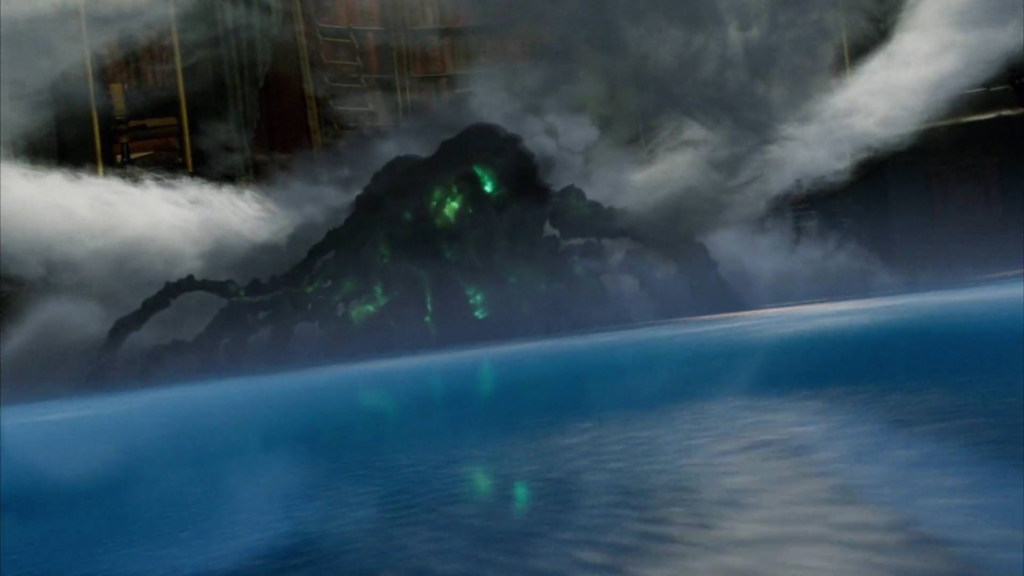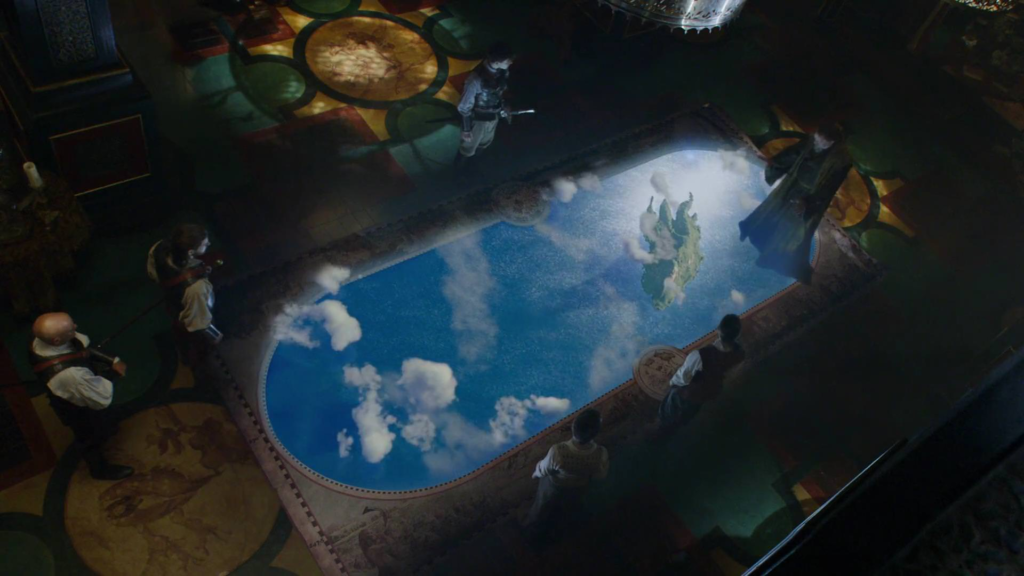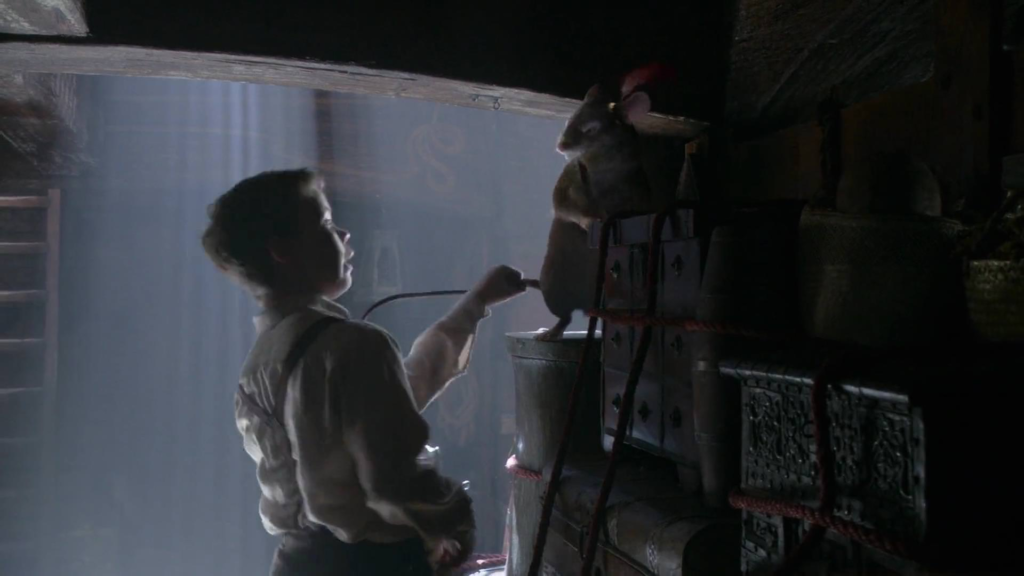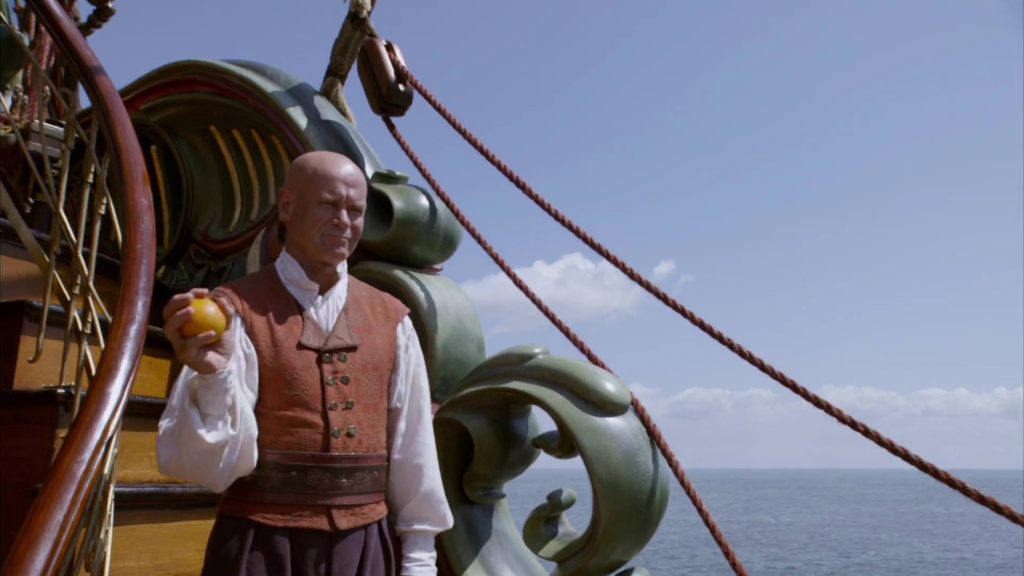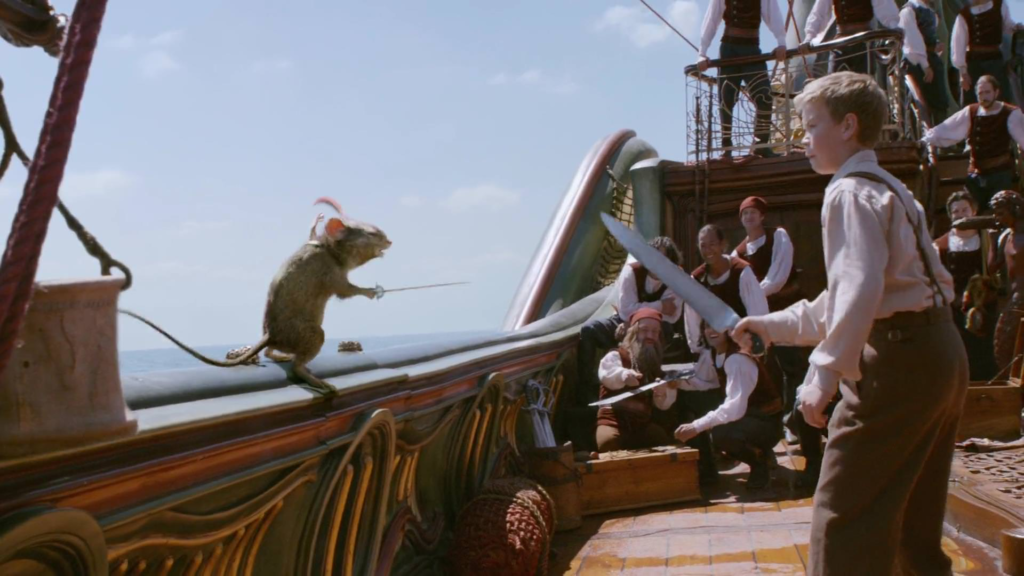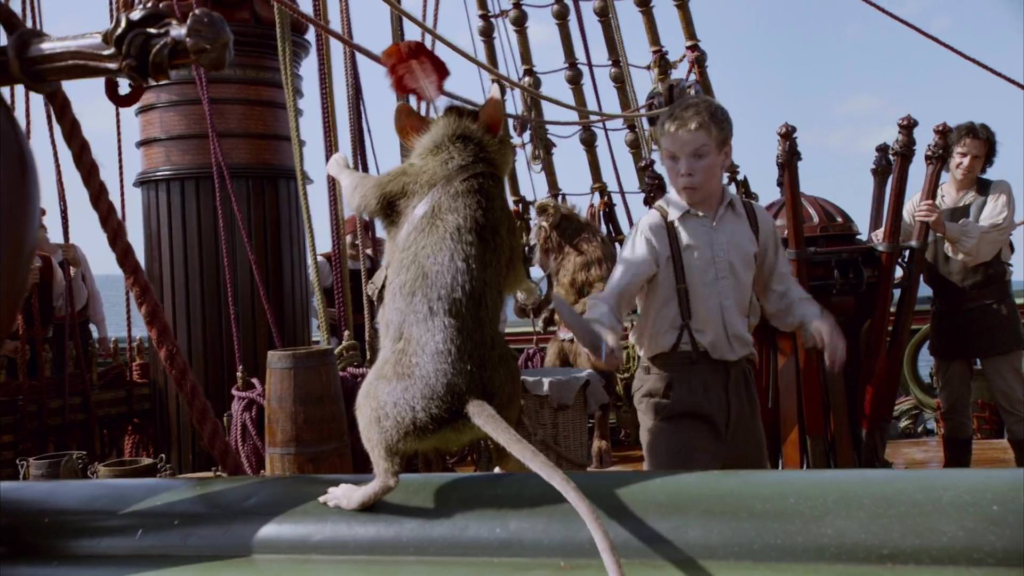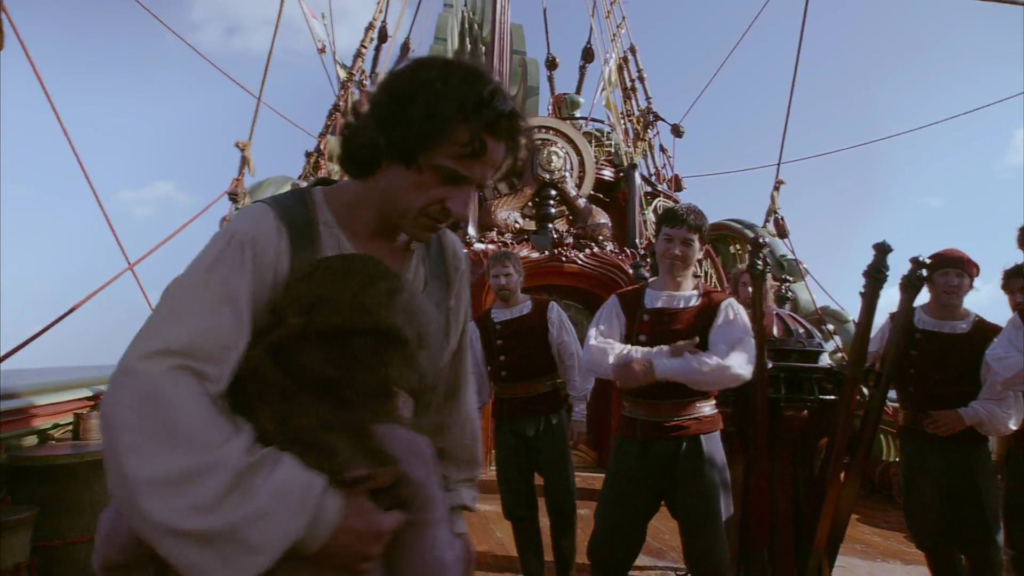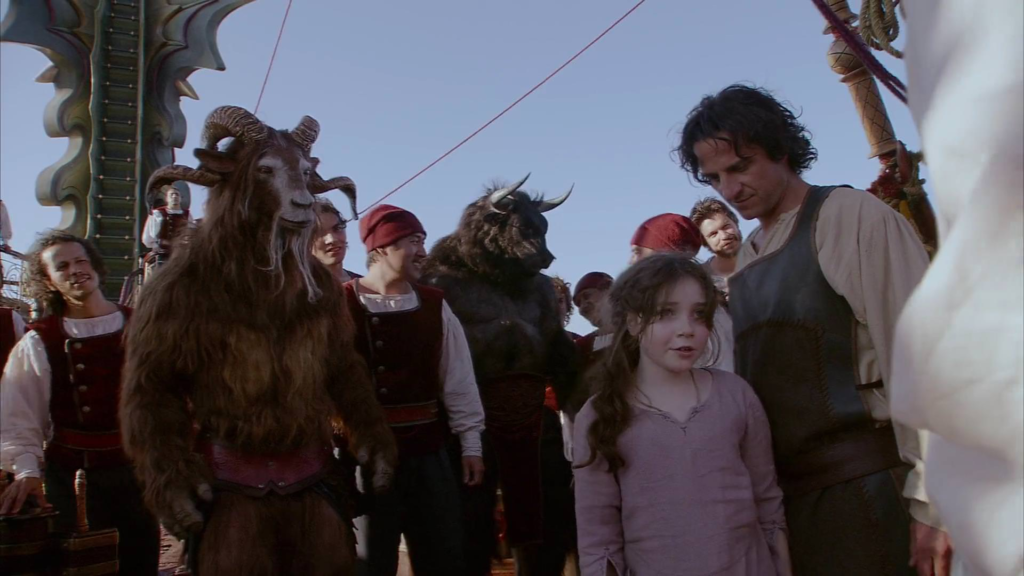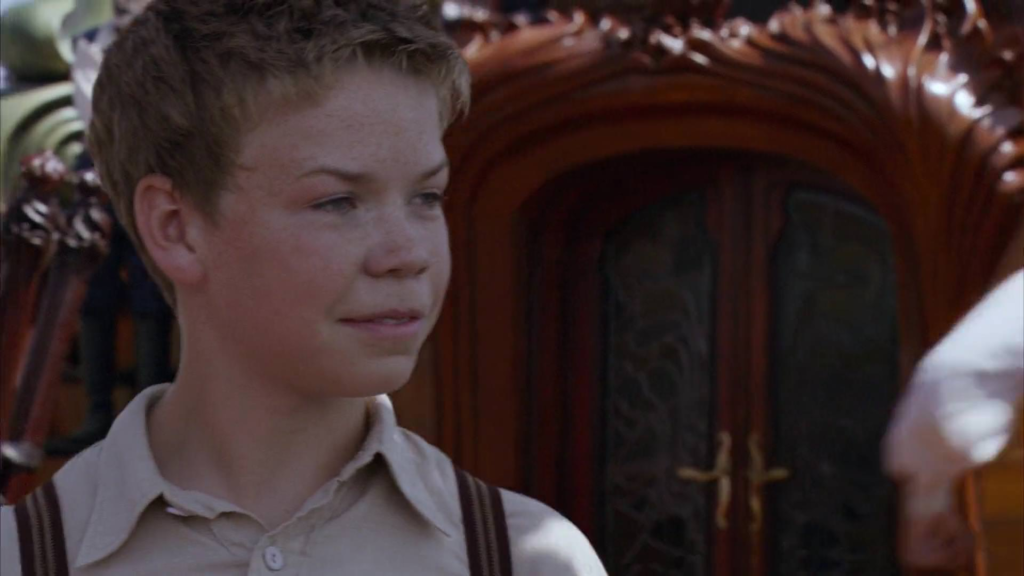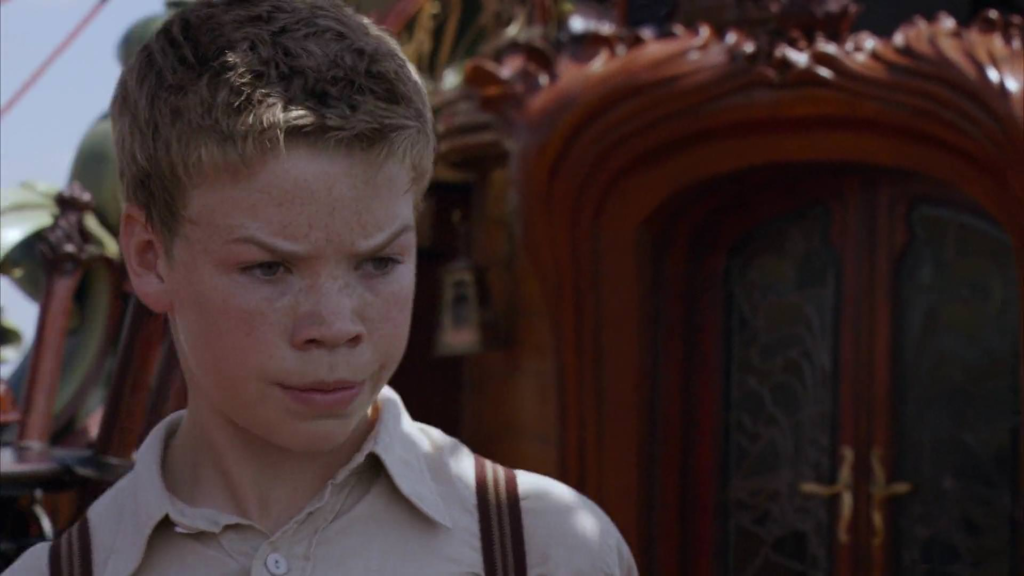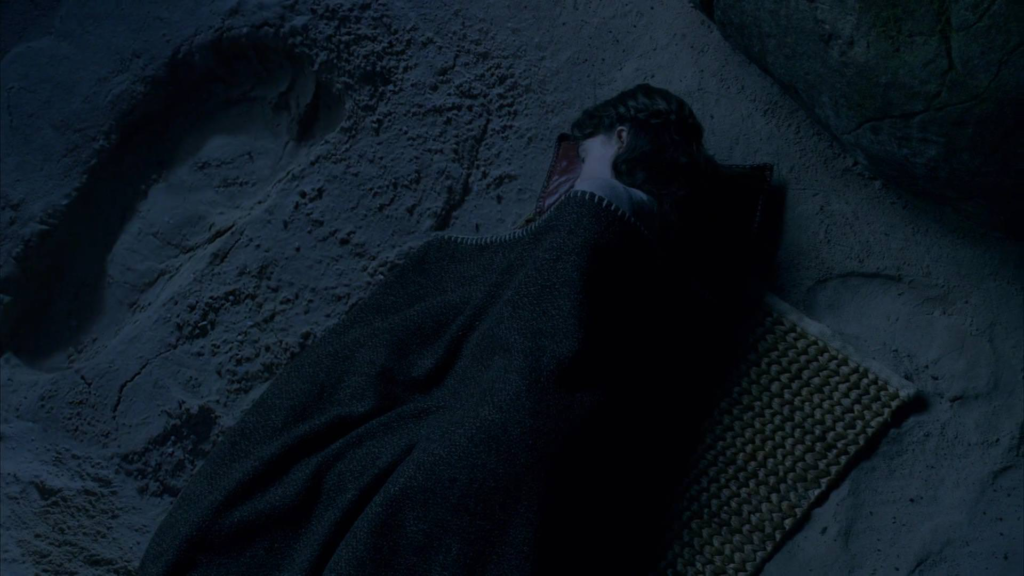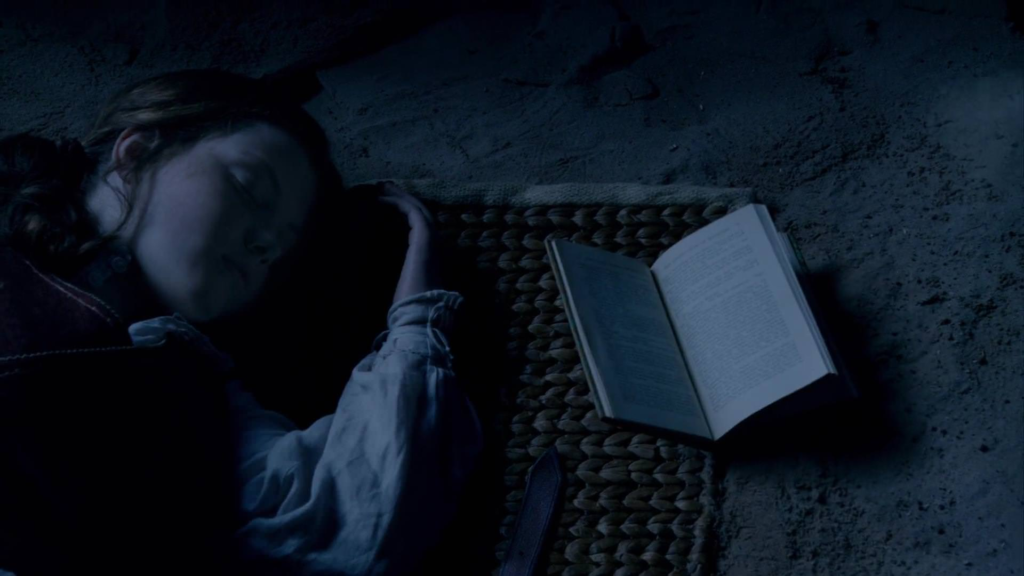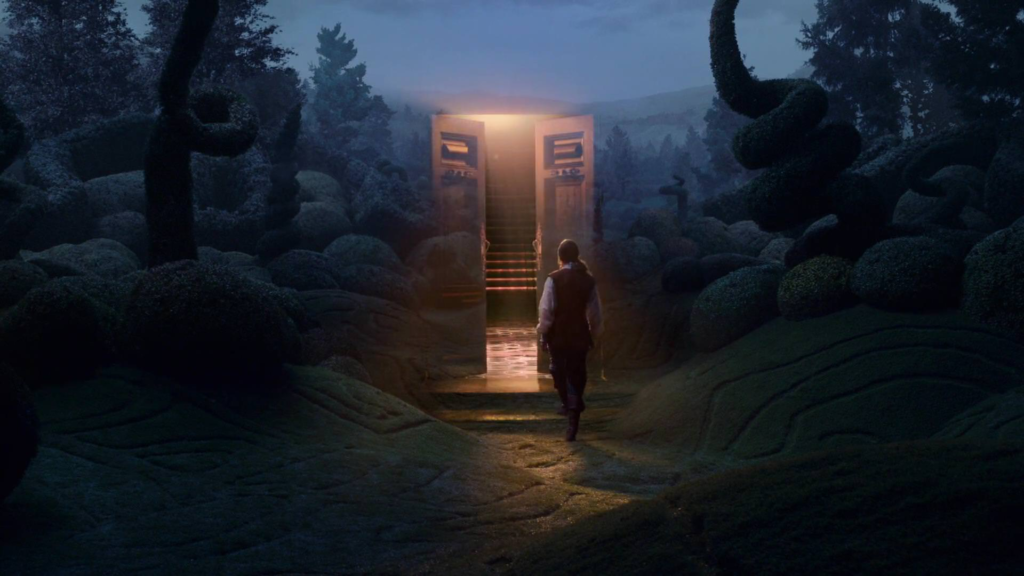I first came up with the Animation Station series because I realized there were movies and shows about which I wanted to blog, but which weren’t adaptations. Well, that’s not quite true. Many of them were adaptations of preexisting material but I didn’t want that to be the main focus of my blog posts about them. What they did have in common was being animated. Now I’m really stretching that label to write about what I wish. The…thing described in this post is barely animated at all. But I love reading about fascinatingly weird and silly pieces of media online and wanted to try my hand at describing one and this little obscurity called out to me.
How did I learn of it? Well, one of my favorite web pages is The Island of Misfit Christmas Specials which covers a couple of rarely broadcast Christmas specials or movies every year. I enjoy reading about them but only occasionally does one of them sound so interesting that I get the urge to watch it for myself. One such “Misfit” was The Talking Christmas Tree which Peter Paltridge (the writer for the site) claims to have found on VHS at Goodwill. I’m glad I found it on YouTube because Paltridge’s entertaining but brief writeup hardly does this thing justice. The Talking Christmas Tree[1]or The Talking Christmas Tree Bedtime Stories as it’s called by its credits. was made by a chain of department stores for a local TV channel in Portland, Oregon and seems to be a series of five episodes which would air on the nights leading up to Christmas. Yet strangely the host refers to stickers coming with the video box, implying it was made specifically for the VHS format. I guess kids were just supposed to stop the tape after each episode and start it again the next night. Who knows?
Anyway, each episode begins with an annoying theme song that rips off When I See an Elephant Fly from Dumbo. (“If you’ve ever seen a house fly or a kitchen sink/or a door jam or a camera wink, etc.”) These lyrics were written by Bob O’ Donnell, who was the mastermind behind this whole thing, writing, producing and directing every episode. The music was by Jon Newton who also did the entire background score. The singer is the titular Christmas Tree, a rather freaky looking fellow who appears in (barely) animated form at this point.
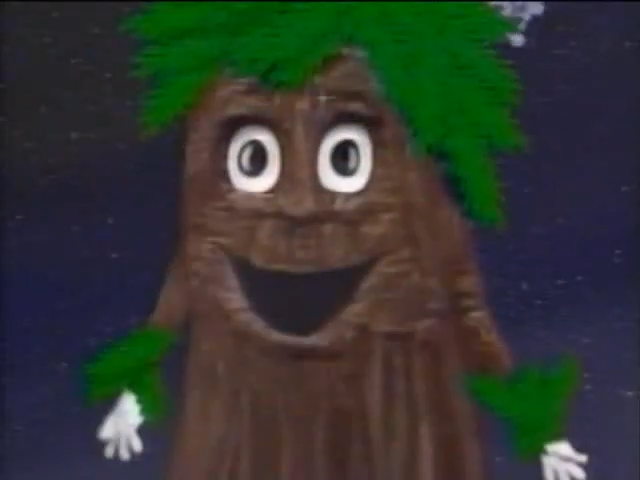
We then see the Tree as a costumed actor in Santa Claus’s living room. It still looks freaky.
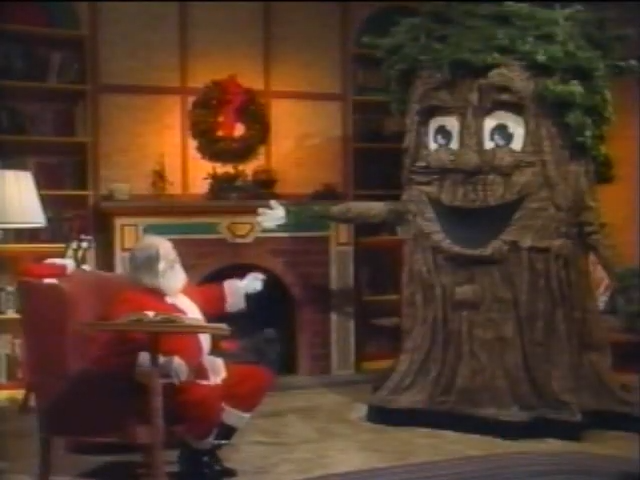
Santa is played by a very…enthusiastic actor. Note that I didn’t say a good actor, just an enthusiastic one. I assumed that this was the man who played Santa for the department store or maybe some random guy they pulled off the streets but no, if Dallas McKennon is the same as Dal McKennon[2]The credits don’t actually list him as playing Santa but they say “special thanks to Dallas McKennon.”, he’s actually had a career stretching back all the way to 1940 even though he mostly appeared in bit parts. His biggest role seems to have been the voice of Gumby.[3]Well, that or his role on the old TV series, Daniel Boone but I imagine modern audiences are more likely to recognize Gumby. It’s possible McKennon also voices the Talking Christmas Tree itself since I can’t find anyone else credited.
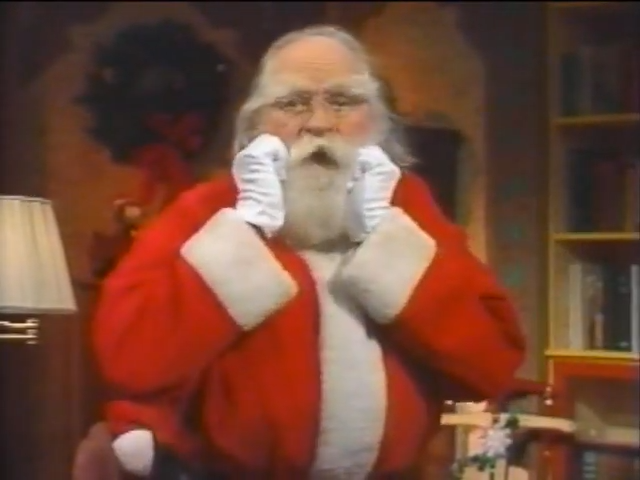
At the beginning of the first episode, Santa explains that the Talking Tree is “a colorful, laughable once-a-year slapstick-al, magical talking tree!” This description gets repeated in subsequent episodes. Allegedly, all the Christmas decorations in this world are magically created by the Talking Tree. It makes a new one with every kind thought someone has. “Santa! Get ready!” cries the Tree as it spins in a circle. “It’s that special wonderful holiday feeling!” Sure enough, a cardboard wreath materializes above Santa’s cardboard fireplace. Hearing the chiming of a clock, Santa says to the camera, “It’s seven snowflakes past an icicle(?) and we’d better get started cause you have to get to bed!” It turns out the Tree can make ornaments out of stories too with the help of young viewers, he stresses, and Santa is going to read one a night out of a “special storybook.” Each story is accompanied by artwork that sometimes gets a trifle animated. I’d have assumed these were from picture books ala Reading Rainbow but, no, apparently the stories and the images were specifically created for this by Bob O’ Donnell. Well, the stories were written by him. The first one is called Too Much Wrapping Paper and it’s my favorite of them, but it should really be titled The Mad Wrapper.
Matt and Jenny loved the Christmas season because that meant all of their friends and relatives would come to visit and they had lots of friends and a big, wonderful family.
Despite that being the opening sentence, Matt and Jenny hardly figure in the story at all. The real main characters are their Uncle Henry and Aunt Hannah who live “not too far” from them. I can’t say much for the artwork by Mary Rinaurd on display here but at least the writing shows some wit.
If Uncle Henry had a fault in the world, it was that he believed mirrors tell lies. “When I was a young man, mirrors didn’t leave hair off the top of my head the way they do today!” he liked to tell Aunt Hannah.
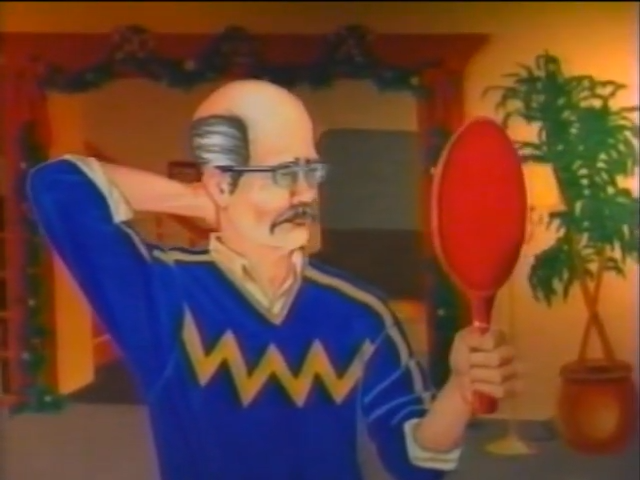
Aunt Hannah’s one fault meanwhile is hoarding wrapping paper and bows. In fact, whenever her family opens presents, she’s there “with a busy grin on her face to collect the wrappings sometimes before they even got all the way off the package.”
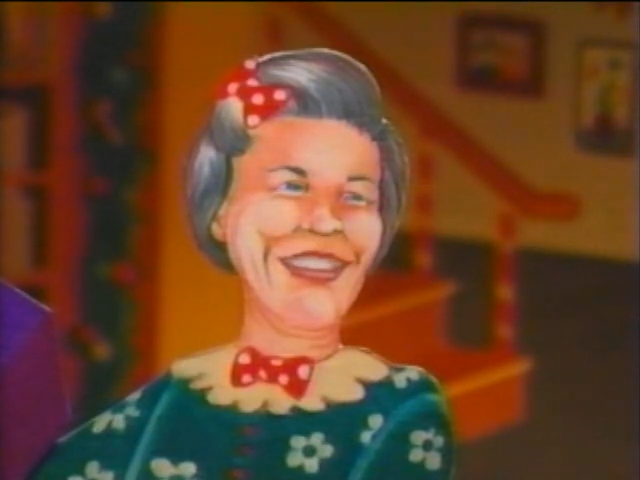
One fateful night[4]“Right about now,” says the Talking Christmas Tree. What’s that supposed to mean? she wraps all the Christmas presents for her family in the blink of an eye but her appetite for wrapping is still not sated, so she wraps her husband’s slippers, toothbrush and toothpaste and puts “Do Not Open till Christmas” stickers on them. But her lust for parceling only grows and she then wraps up a chair and the TV and the garbage cans! Uncle Henry returns from work to find everything in his house wrapped including his supper and the dog, Pepper. Somebody, call the PETA!
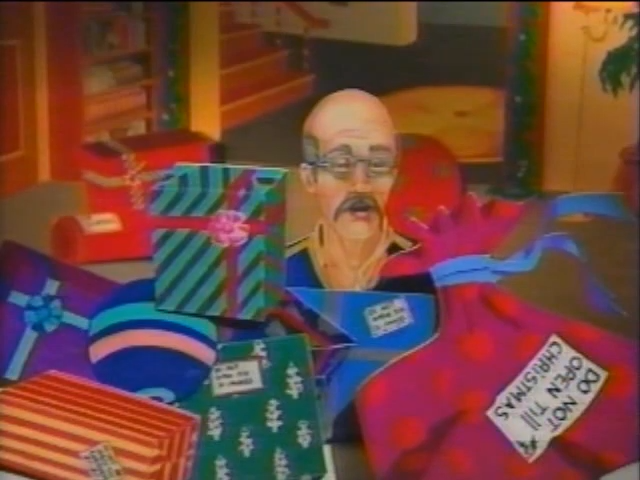
He finds Aunt Hannah sleeping peacefully upstairs and reasons that at least she’s got that crazy urge out of her system. But this proves to be wishful thinking. The next day at work, he gets a call telling him his wife has brought traffic to a standstill by wrapping a stop sign. She’s even taken to wrapping up people like the mayor and at the moment, is working on every ketchup bottle at Ferguson’s Market. You’d think the police would put a stop to all this but (a) she’s wrapped up what seems to be their only motorcycle and (b) she’s also put “Do Not Open till Christmas” stickers on everything and the people in this community really respect those signs, so much so that they’ll apparently let the mayor suffocate and allow any number of traffic accidents rather than unwrap anything with one of those stickers. (Thankfully, she neglected to put one on Pepper.) Uncle Henry solves the problem by wrapping up Hannah’s tape and scissors and putting “Do Not Open till Christmas” stickers on them. Whatever else can be said against her, Aunt Hannah really respects those stickers, much more than she respects stop signs apparently.
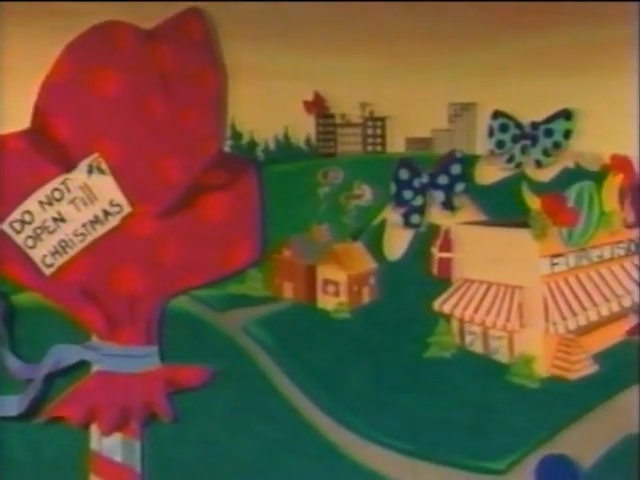
Uncle Henry expects an angry mob but, no, on Christmas Day the townspeople have a wonderful time unwrapping everything. (“But they didn’t unwrap the mayor,” we’re told, “because he might have made a speech.”) We end on an ominous note as Aunt Hannah privately murmurs that next year she’d better get started early on her wrapping.
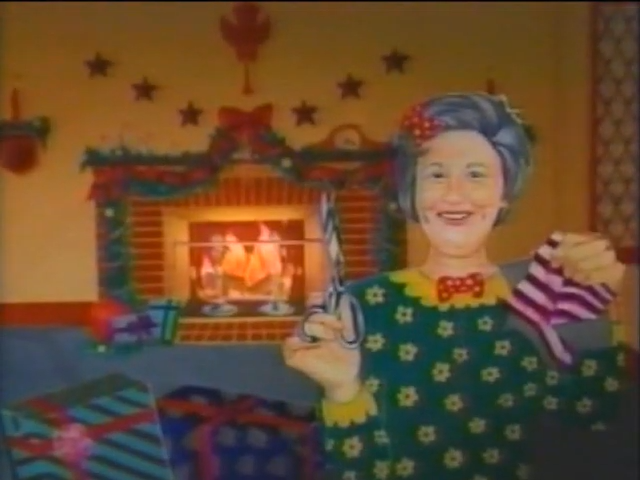
“I liked Aunt Hannah,” declares Santa with his usual enthusiasm. “She’s the sort of person who can’t do enough for people!” Excuse me, is that what we were supposed to take away from that insanity?! Aunt Hannah was clearly putting her own depraved desires over everyone else’s convenience and safety. In any case, the sound of canned clapping is heard which Santa tells us means everybody else liked the story too. The Tree gets that “special, wonderful holiday feeling” again and an Aunt Hannah-shaped ornament appears. Santa hangs it on the Talking Christmas Tree.
The next episode begins with Santa looking over some letters. One is from a girl who says a classmate doesn’t believe in Christmas because her dad is out of work and can’t afford any gifts, so the letter writer would like all her own gifts to go to her instead. This kind thought causes the Tree to create a star ornament. “Thank you to whoever wrote that letter,” says Santa. Did he forget her name already? Or is he just trying to protect her privacy by not mentioning it on the air? I’m pretty sure that wasn’t a real letter. Anyway, the title of this night’s story, which features artwork by Mike Black, is The Magic Elevator. It begins with four kids, Marie, Janet, Will and Eddie, decorating a nontalking Christmas tree at their daycare center for an upcoming party. All is not well. “Decorating for Christmas isn’t work,” insists the narrator[5]Yeah, about that…, “but to these kids, it was an awful chore.” It turns out the kids are sad because their parents have to miss the party due to work. In fact, their parents have to work so much they’ve missed all their (the kids’) last birthdays. “I hate elevators!” shouts Will. “It’s all the fault of elevators!” That…is a sentence. “Every time my mom leaves me to go to work in the morning, she goes up and up in an elevator and then when she comes down at the end of the day, she’s tired and worried and doesn’t even smile at me! Elevators keep taking our parents away!”
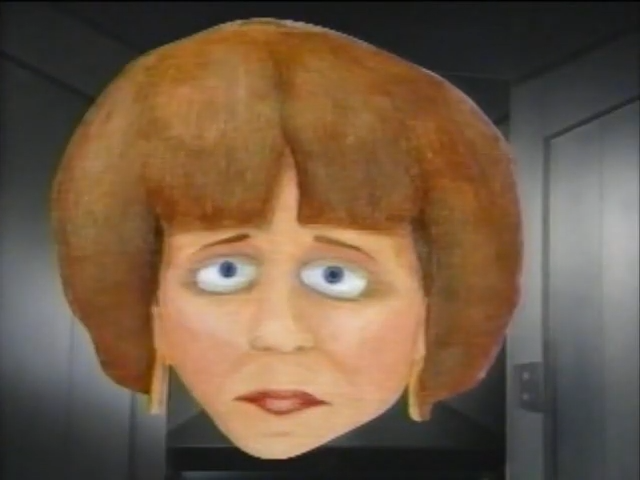
After the way the last story went, I’m wondering if this will lead to the kids going on a rampage and vandalizing elevators all over town. Instead, with “a happy sound(?) and a twinkle of light,” the partially decorated tree transforms into a smiling man in a green uniform, one with a tiny Christmas tree on his cap. “Did someone call for the magic elevator?” he asks. Unlike those ordinary elevators that take you where you want to go, he explains, the magic one he operates take them where it’s fun to go.
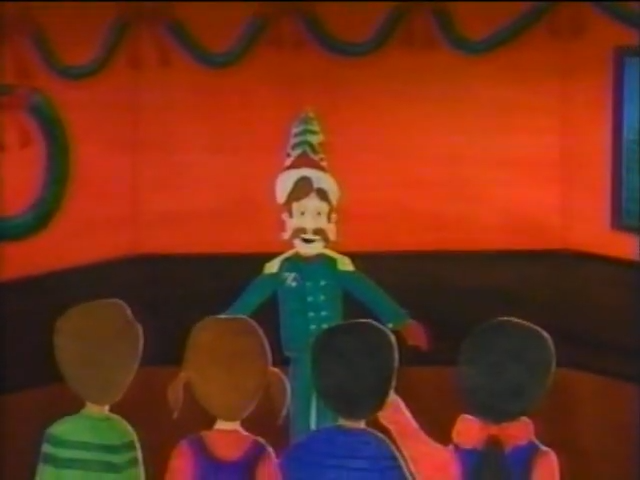
The kids barely have time to process this before they realize their daycare is flying over the city. Apparently, the magic elevator is just whichever room in which the operator, Ted, happens to be. The elevator lands and the walls of the daycare center open to reveal Marie’s mother in a room full of gray-suited businesspeople talking about money and charts. The horror! Ted grabs Marie’s mother and takes her into the elevator. It travels across town, doing the same to everyone’s parents. Now they have no choice but to attend “the silliest, happiest Christmas party ever.”
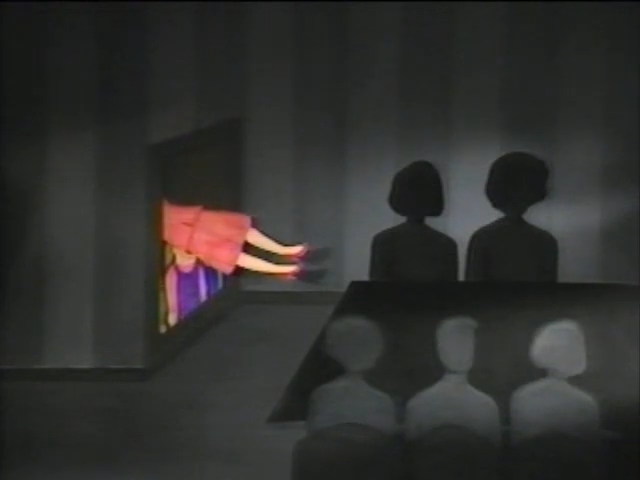
Everyone has a great time partying as they fly over “people in gray clothes who ride in elevators that only go up and down.” Losers! Eventually, the elevator returns the parents to work, the daycare goes back to its usual location and Ted reverts to being a Christmas tree. Although Marie, Janet, Will and Eddie hadn’t finished decorating him, the job has been completed by those kind thoughts they had for their overworked mothers and fathers. This is good since other kids have now shown up for the party as originally scheduled. Later that day, Will’s mother tells him “All of a sudden this afternoon, I got the happiest, silliest Christmas spirit. For a while, I felt like I was flying in the sky like Santa.” So… does that mean the magic elevator didn’t physically take the parents from their jobs? That was all a metaphor? It just lifted their spirits? Is that why their employers aren’t angry about it? Or did he really kidnap them and then alter their memories? Whatever makes sense to you, I guess. This great work is clearly open to many interpretations.
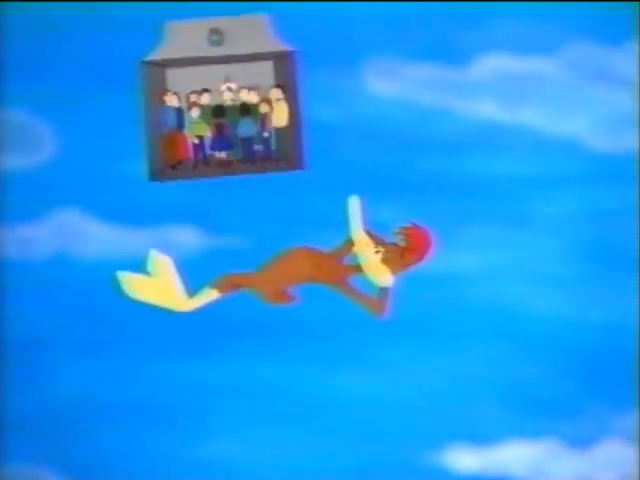
The Magic Elevator receives even more canned applause than Too Much Wrapping Paper and creates another ornament, this one depicting the elevator/daycare center. The following episode begins with the Talking Tree getting “that special wonderful holiday feeling” and creating a menorah. Santa explains its significance. Whenever a Christmas special does something like this, I wonder about the intent. Do the creators seriously think that Jewish families are going to watch this every year because they talk about Hannukah for roughly a minute?[6]Of course, not all Jews are practicing Jews. Maybe the idea is supposed to be to educate kids about other cultures. But the episode ends with the Tree sending “a special message of holiday cheer to our Jewish friends,” which seems weird if they’re not watching. “Good wishes can be expressed all sorts of ways,” Santa rhapsodizes, “which brings us to tonight’s story.” That story being Jingles the Christmas Cat featuring illustrations by Chris Powers. We’re told Jingles’s owner, a girl called Ellen, gave him his name because he seemed to love the song Jingle Bells. He also loves food to the extent that Ellen’s father is insisting he lose weight. He says this just as Jingles is settling down for his evening nap, “the one he took to give him energy to go to bed.” “If he doesn’t slim down in a couple weeks,” says Dad, “I’m going to send him out to Uncle Leo’s farm. He can live with the barn cats until he gets into shape.” Hey, if you didn’t want your daughter to have a pet who just eats, sleeps and gains weight, maybe you shouldn’t have gotten her a cat.
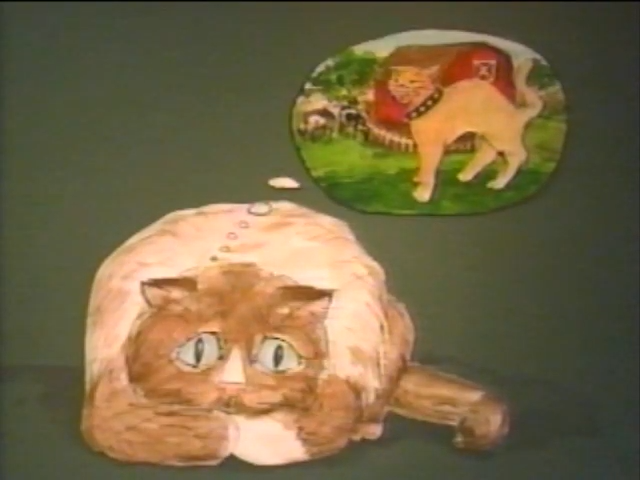
Ellen gathers all her friends for a meeting to discuss how to save Jingles. One girl, Lois, says her mother teaches an aerobics class, so the kids sneak Jingles in for some exercise, but he refuses to comply. But then he notices a small exercise outfit in the window of a giftshop. Jingles rubs against the glass and purrs. This provides Ellen with the perfect way to motivate the cat. She buys the outfit and tries to squeeze Jingles into it to no avail. “See?” Ellen tells him. “If you’d go to exercise class, you’d become a skinny mini and this outfit would fit you just right.”
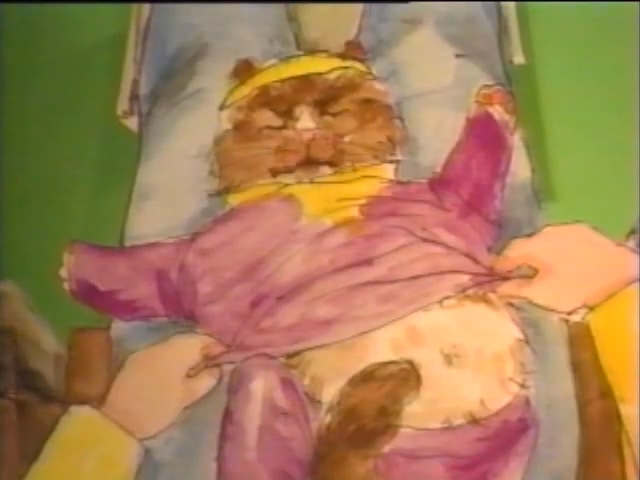
Jingles runs back into the class. Who knew cats were so interested in snazzy clothing?
For the next few days, he was the best exerciser you ever saw. He did the Jamming Jump. He did the Frantic Footwork (with the Funky Finger-snap of course.) Finally, Lois’s mother gave him a special diploma, like you get in high school, for being the best cat in the class.
My guess is she just wanted to get Jingles out of there so he wouldn’t make the humans feel bad about themselves. The cat’s weight loss impresses Dad but as he happily dreams of aerobics class at night, he keeps everyone else in the house awake by purring “in a jazzy rhythm.” Before this, his flab kept the noise down. (Is that how it works?) Jingles is in danger of being sent to the farm after all, but Ellen saves the day by giving him an early Christmas present. It’s that exercise outfit which insulates his purring. On Christmas morning, Ellen unwraps a matching outfit of her own. It comes with a note, ostensibly from Jingles, thanking her for her care. Did he really write that or was it her parents? Normally, I’d assume the latter but with these wacky stories, who knows?
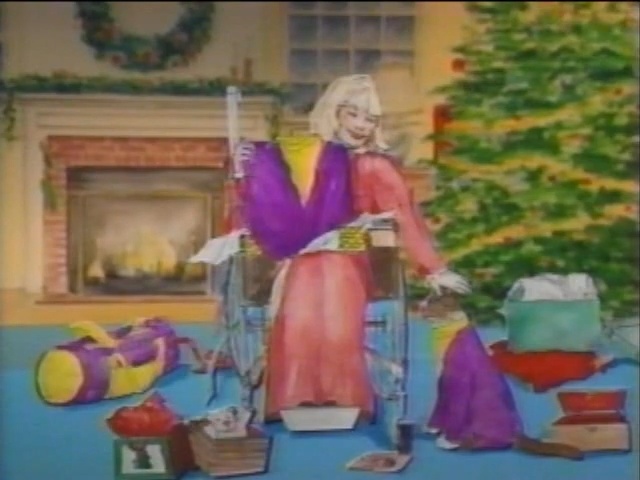
The ornament for this story, interestingly enough, portrays Jingles eating, not Jingles exercising. I guess that wouldn’t have felt Christmassy. The next episode begins with Santa freaking out because the Tree has a jack-o-lantern with valentine hearts carved into it and a birthday cake that looks like an Easter egg.
Santa: Everybody knows that you give eggs at Eastertime and for a birthday you bake-
Tree: A pumpkin pie filled with turkey.
Santa: No, no, no, no! You cook a turkey for Thanksgiving and for Halloween-
Tree: You dress up like a ghost and slide down the chimney and go “ho ho ho!”
Santa fears the Tree has “had too many corndog fudge sundaes” but it turns out the Tree is just messing with him to introduce the fourth story, Have a Happy Whatever illustrated by Nancy Ramsay.[7]I wonder if all these people appreciate me crediting them. It begins with two prankish young brothers, Reggie and Tyrone, whose parents send them to visit their neighbor, Mr. Walls, who’s “so out of touch he cooks a Labor Day turkey and puts flags on the drumsticks.” Ed Lumley, who normally plays a wise man in the town’s annual Christmas pageant, is sick this year and Mr. Walls is going to take his place. Reggie and Tyrone’s parents want them to catch him up on what a wise man in a Christmas pageant should be like.
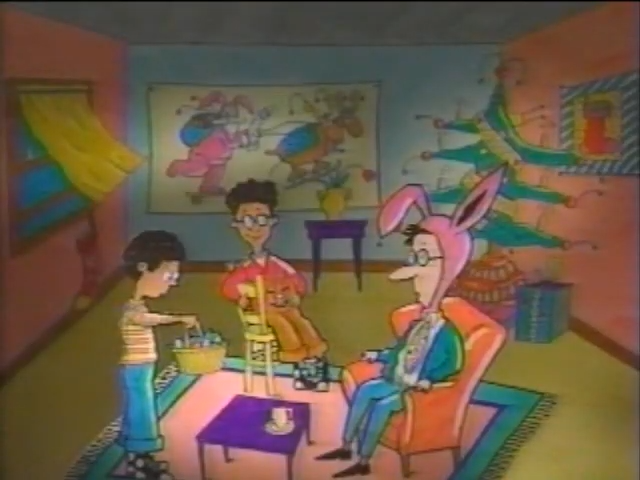
Mr. Walls’s first question is “isn’t Wise Men’s Day in February?” He’s thinking of Presidents’ Day. “But I thought Presidents’ Day was December twenty-fifth,” says Mr. Walls when they tell him this. “No, that’s presents day,” explains Tyrone, “the day when you give presents.” Feeling mischievous, the boys con Mr. Walls into wearing his sparkly Uncle Sam costume for the fourth of July to be a wise man. (He calls it his “Thanksgiving party outfit.”) At the pageant, Mr. Walls enter from the west instead of the east like the other wise men, wearing that red, white and blue costume and carrying sparklers. Didn’t they rehearse this at all? The audience’s laughter awakens the baby playing Jesus who cries. But the sight of Mr. Walls quiets it for some reason. He’s a hero and plays a wise man in the pageant every year afterwards in the same outfit. “As everybody says, it just wouldn’t be Christmas without Mr. Walls.”
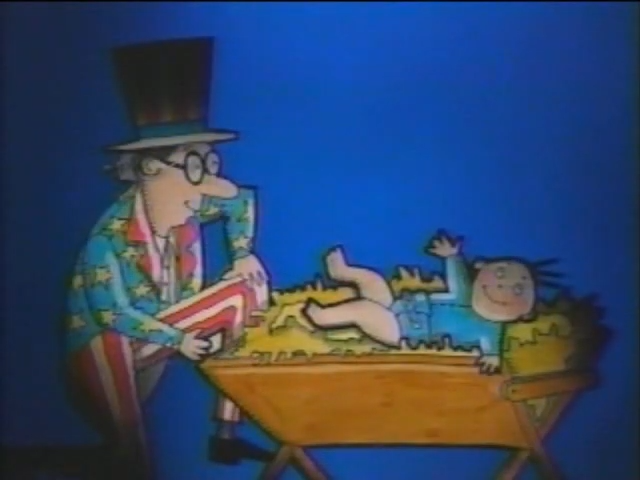
“Reggie and Tyrone saw that playing tricks on someone could hurt their feelings,” Santa concludes. Um, that’s a good message but when did they see it? Giving Mr. Walls bad advice actually led to him being the hero. Then again, the pageant might not have needed a hero if it hadn’t been for his misguided wardrobe in the first place. As the Talking Tree says, “Everything turned out all right in the long run.” The ornament for this story depicts Mr. Walls with his sparklers.
The Talking Christmas Tree actually performs most of the host duties for the final episode. Santa bails out towards the beginning since it’s Christmas Eve and he’s got a lot to do. As for the Tree, “Tomorrow morning, I go back to the forest,” it says, “because the whole world will be decorated for Christmas and my work will be over too.” Santa compliments the Tree, saying, “the world’s never been this beautiful, thanks to you!” I find that hard to believe when half the ornaments we’ve seen this Tree create have been paper cutouts of what look like uninspired picture book illustrations. It isn’t actually delivering presents that takes Santa away from the episode. “Candy canes! Candy canes! We haven’t got enough candy canes!” he cries as he runs offscreen. The Tree reads the final story in his absence. For once, it’s not an original. Instead, it’s Clement C. Moore’s famous poem, A Visit from St. Nicholas better known as The Night Before Christmas.[8]Well, some claim it’s actually Henry Livingston Jr.’s poem but that’s controversial. The visual accompaniment largely consists of still images of Dallas McKennon’s Santa Claus superimposed on illustrations.
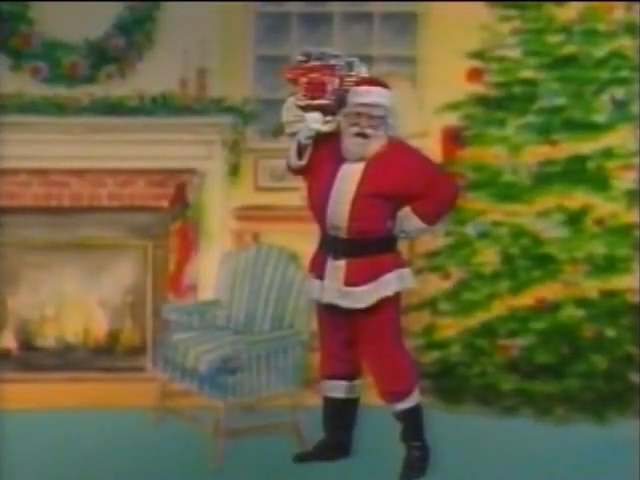
We also get some pictures from previous stories. When the poem mentions “the children… nestled all snug in their beds,” Ellen is shown sleeping with Jingles and for “mamma in her ‘kerchief,” we get Aunt Hannah asleep after a long night of wrapping. The Tree reiterates that it’ll be back in the forest tomorrow. “But I’ll be thinking of you,” it promises, “and waiting for next year when Santa will come get me and you and we can decorate another Christmas season with bright happy wishes!” The last ornament it makes is an image of itself, not anything to do with the story we just heard. What a narcissist!
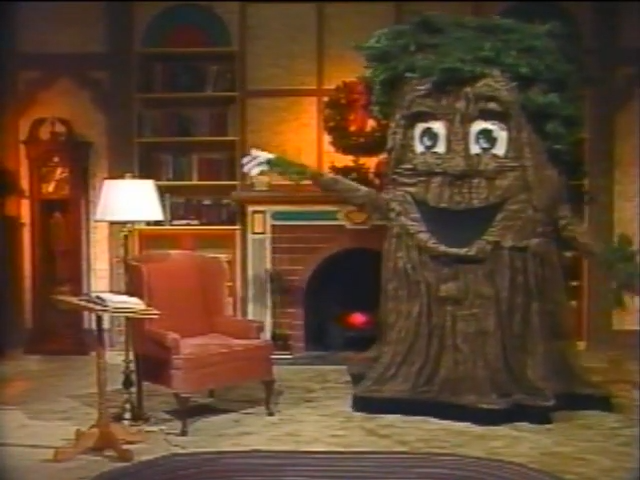
Well, that was The Talking Christmas Tree. I can’t really say it was good, but it was entertainingly weird. You can’t say there was no creativity on display in some of those stories. Hopefully, my recap was both good and entertainingly weird. If not, well, I’ll settle for the last one. Merry Christmas and Happy Hannukah (I suppose.)
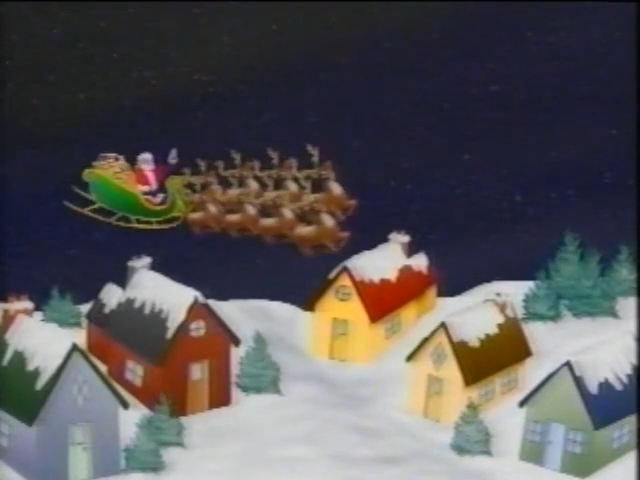
Next Week: Mr. Walls as a Wise Man Wasn’t the Biggest Example of Miscasting in a Christmas Pageant
References
| ↑1 | or The Talking Christmas Tree Bedtime Stories as it’s called by its credits. |
|---|---|
| ↑2 | The credits don’t actually list him as playing Santa but they say “special thanks to Dallas McKennon.” |
| ↑3 | Well, that or his role on the old TV series, Daniel Boone but I imagine modern audiences are more likely to recognize Gumby. |
| ↑4 | “Right about now,” says the Talking Christmas Tree. What’s that supposed to mean? |
| ↑5 | Yeah, about that… |
| ↑6 | Of course, not all Jews are practicing Jews. |
| ↑7 | I wonder if all these people appreciate me crediting them. |
| ↑8 | Well, some claim it’s actually Henry Livingston Jr.’s poem but that’s controversial. |
